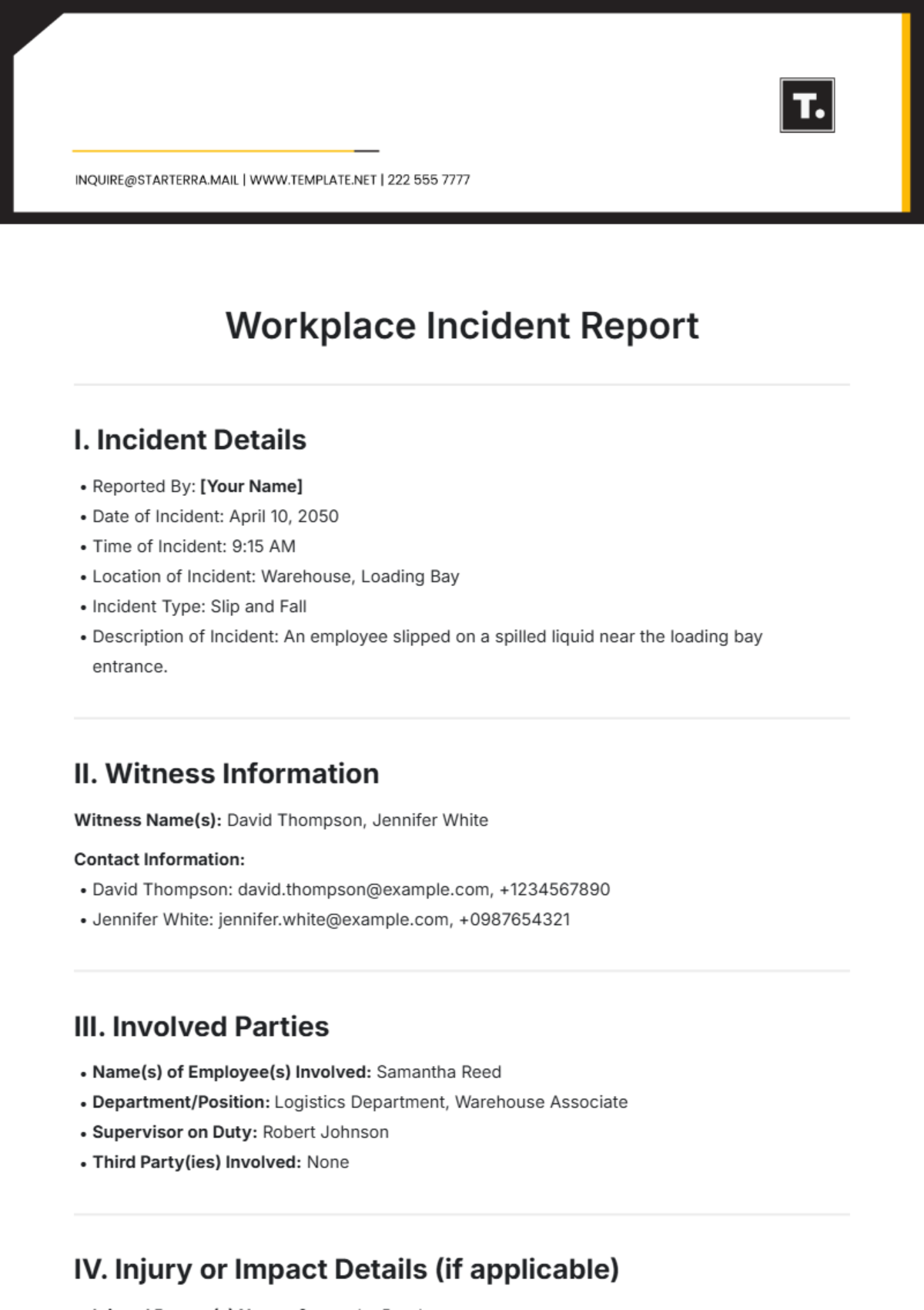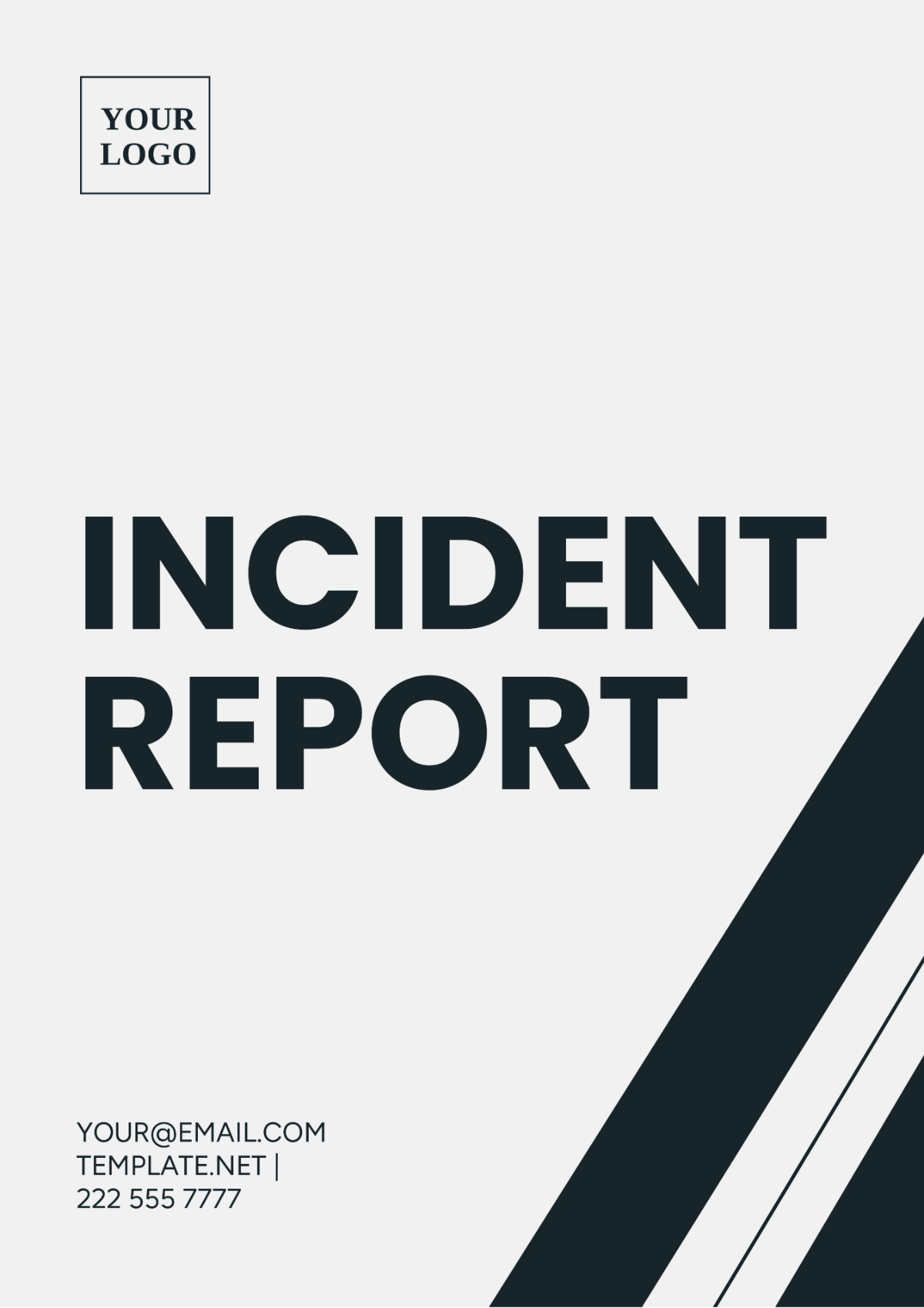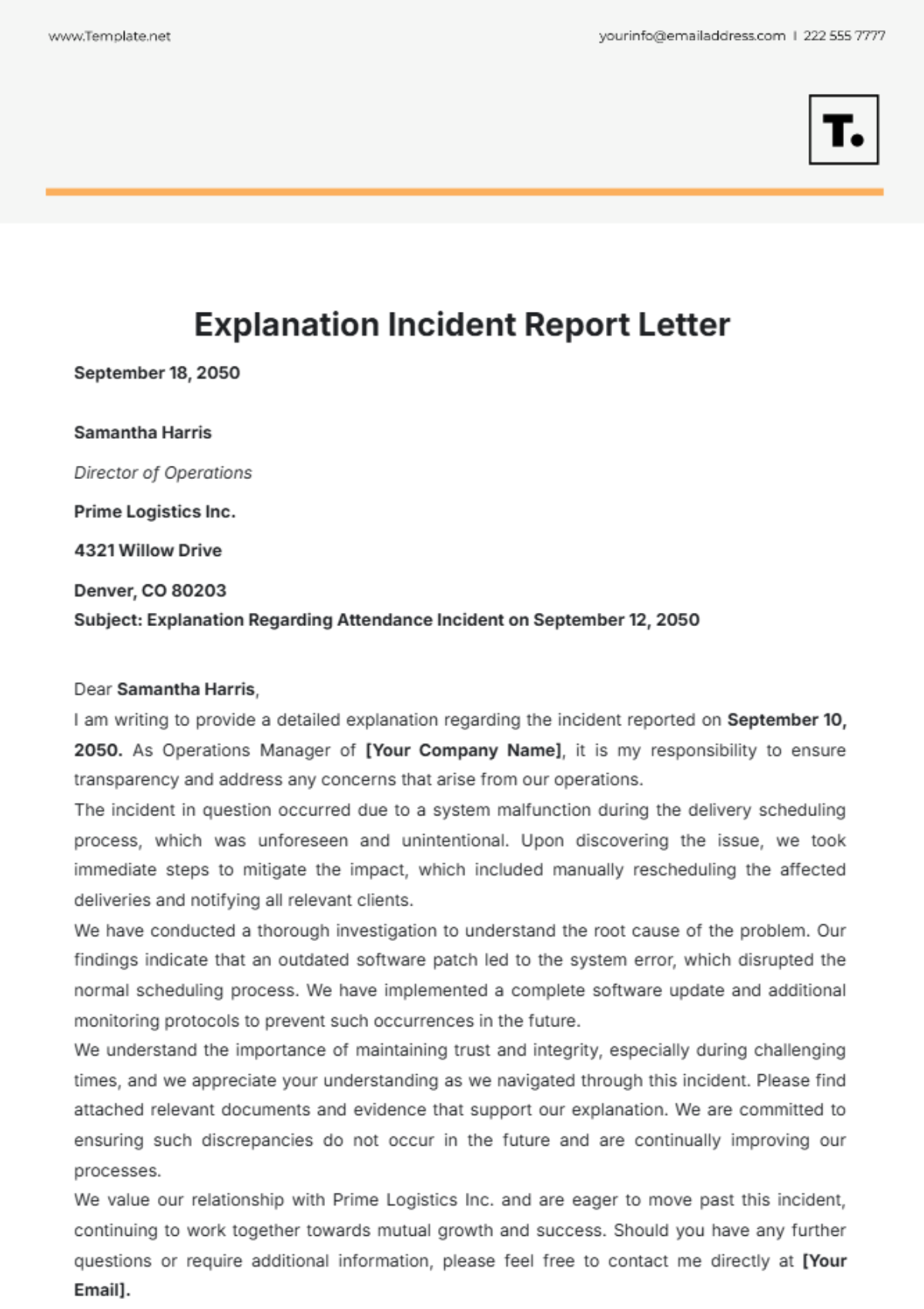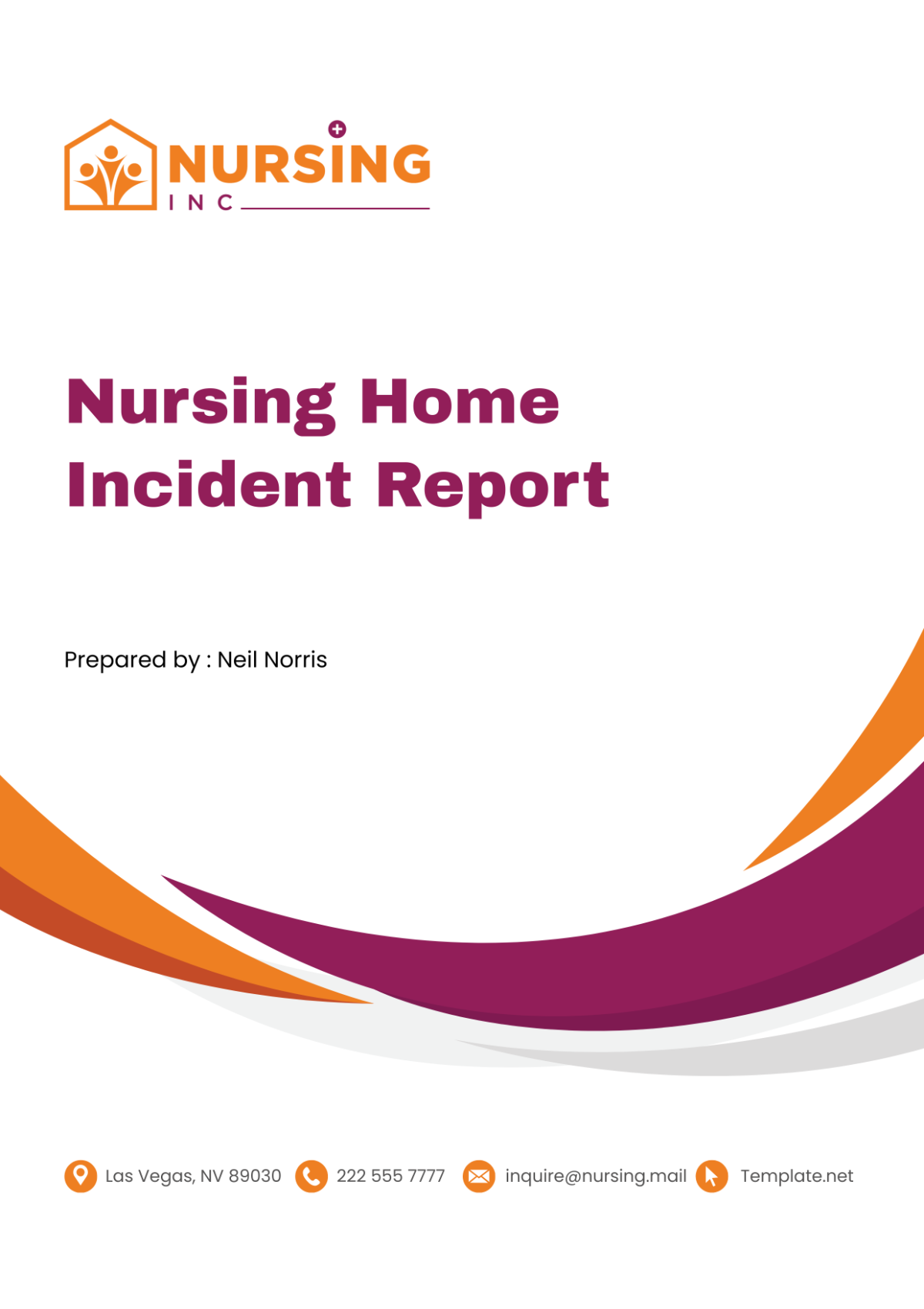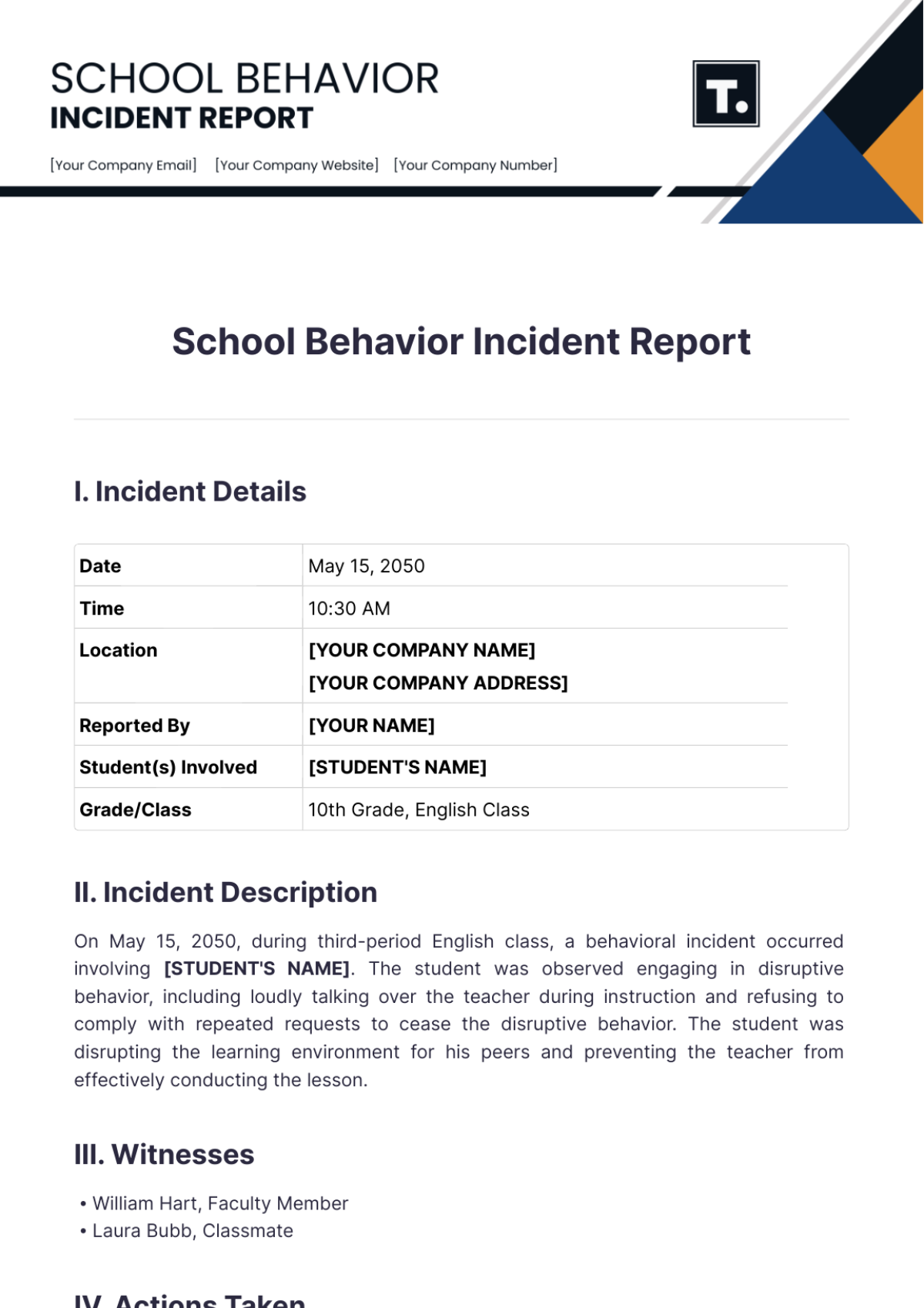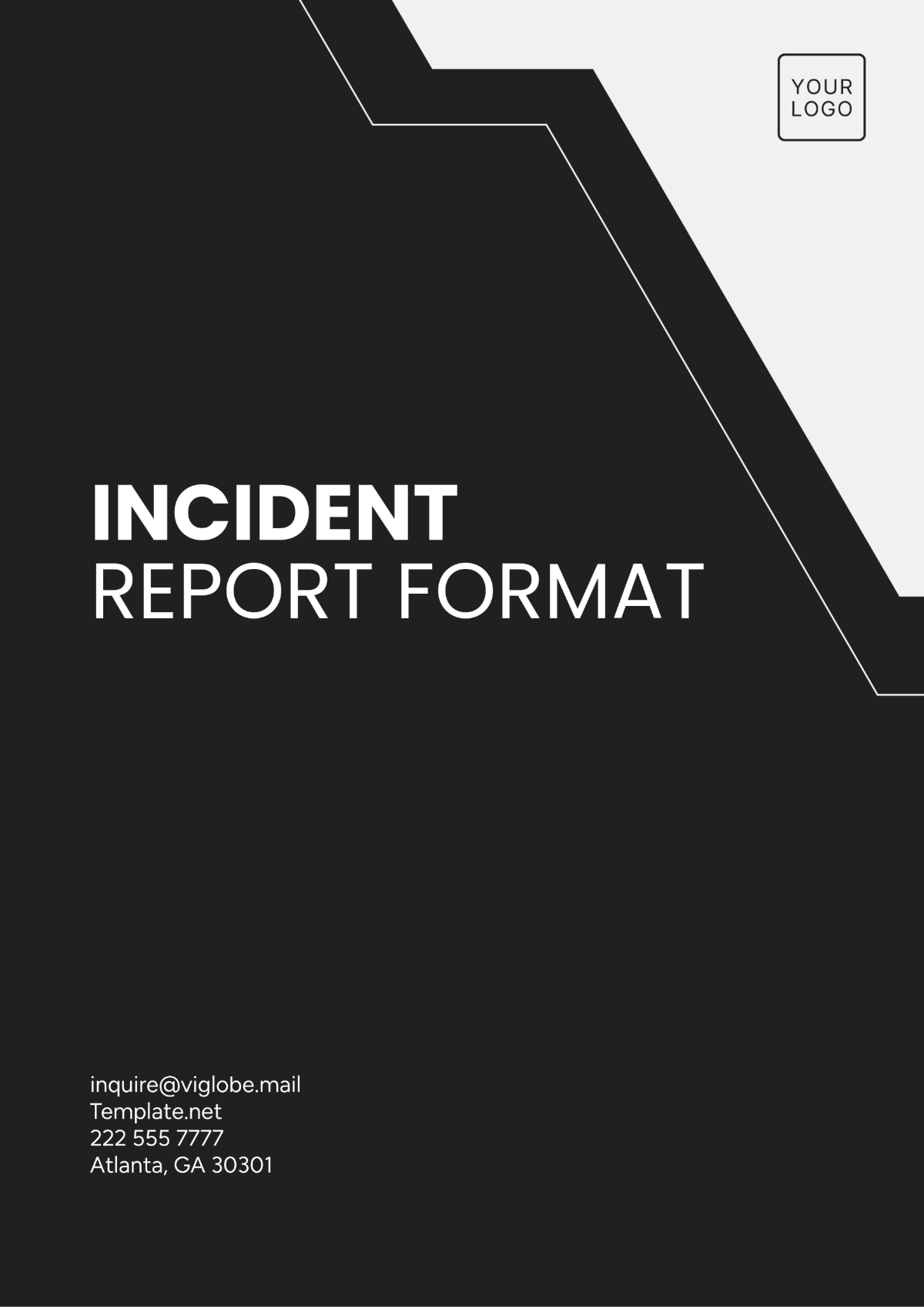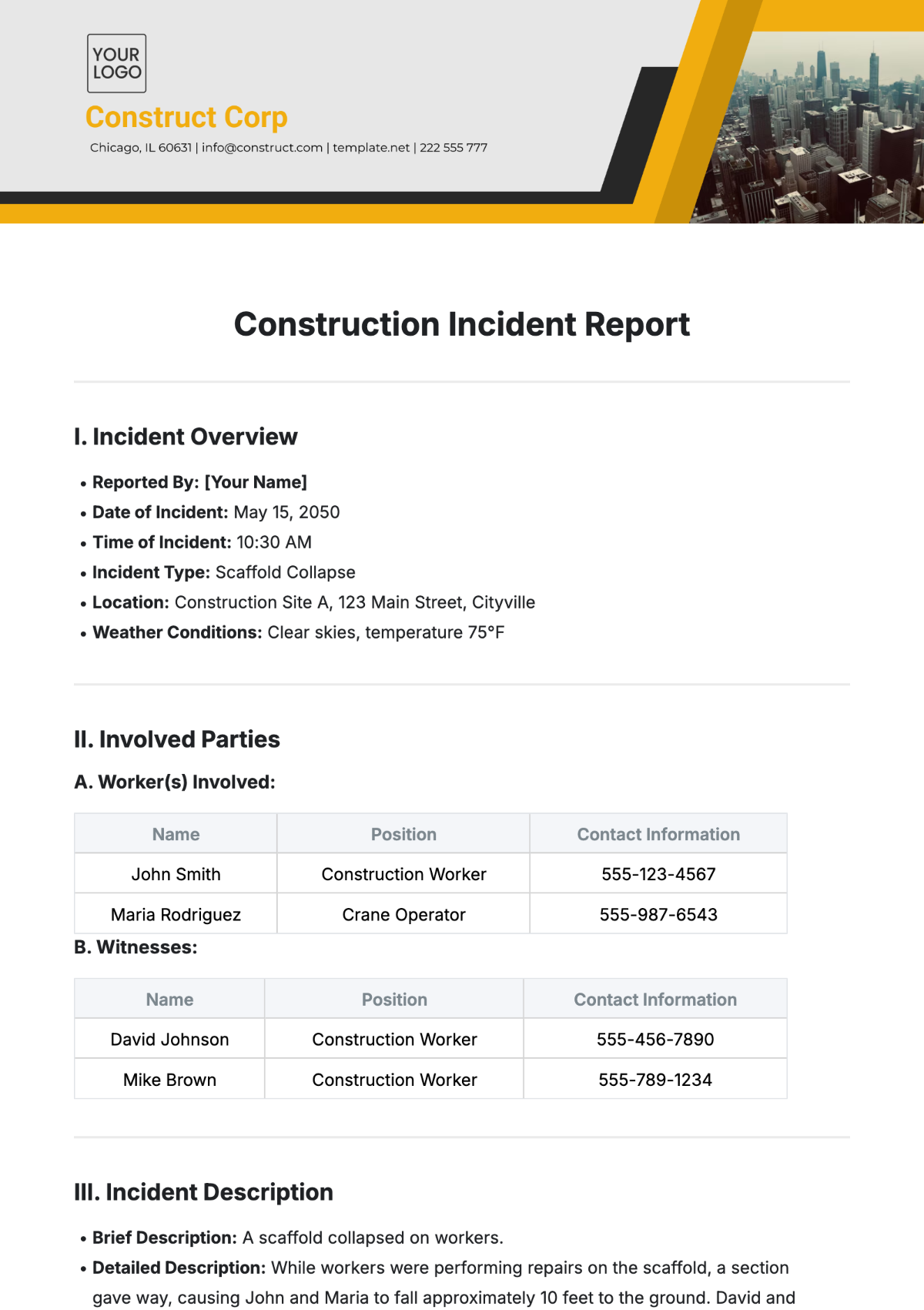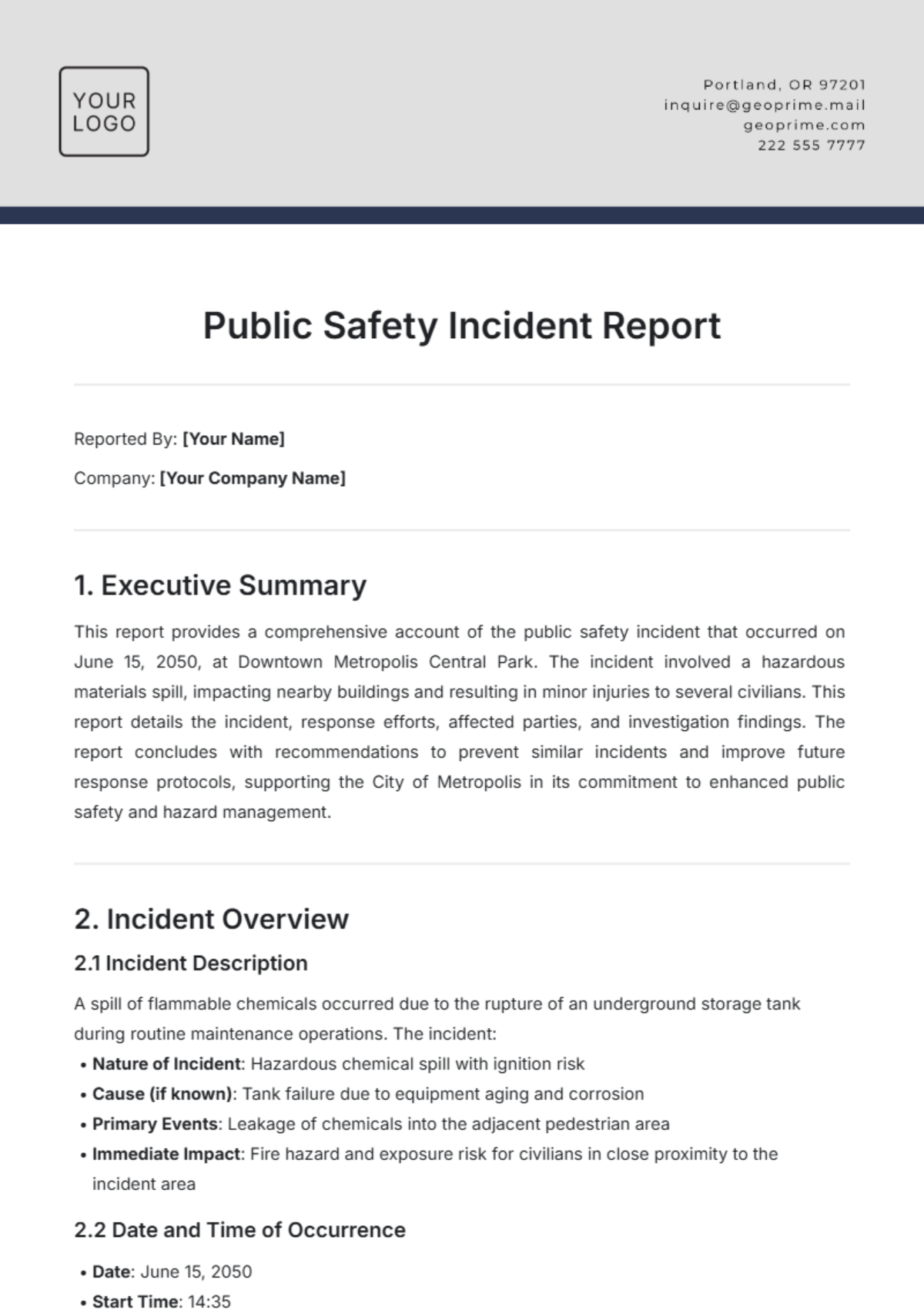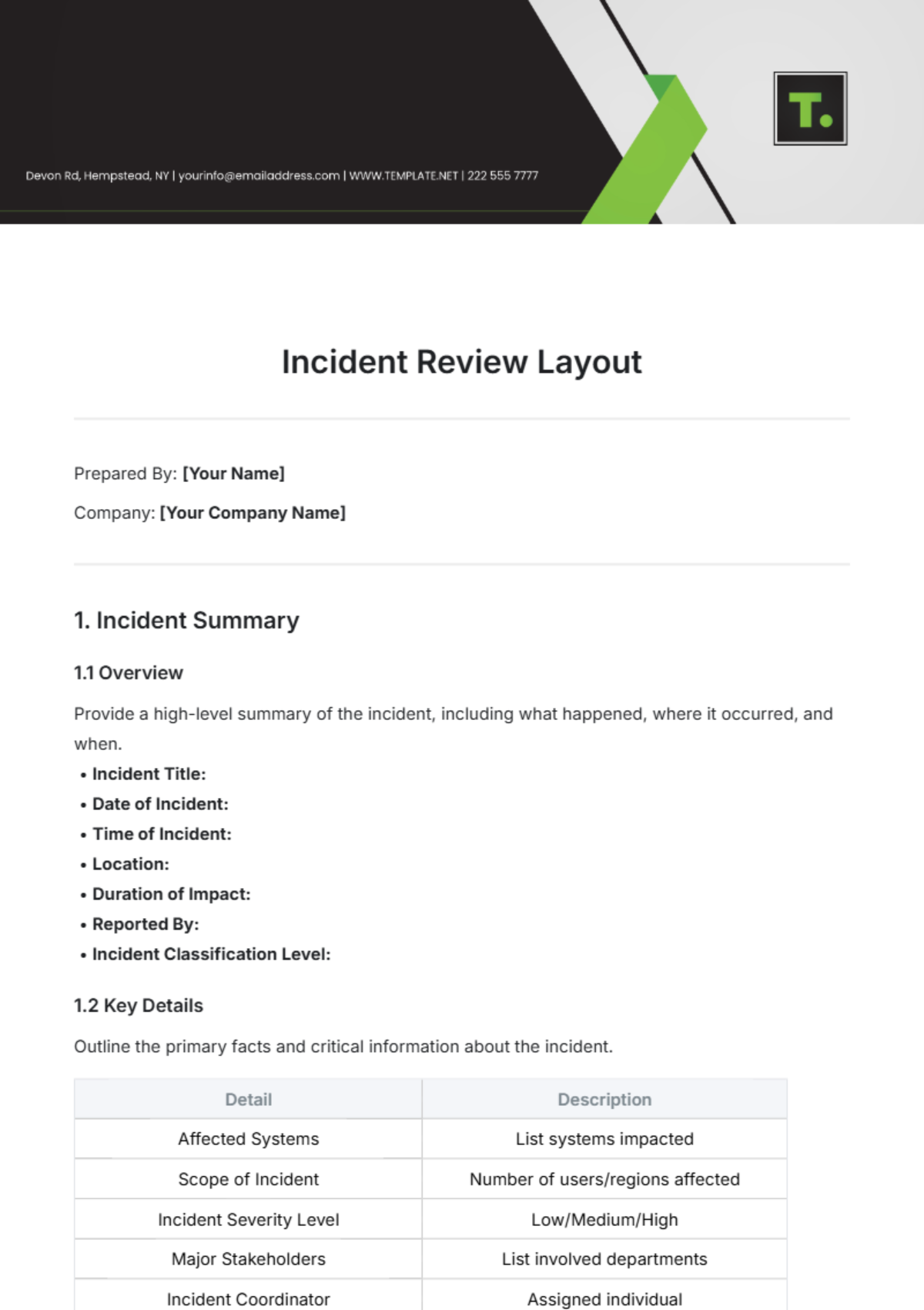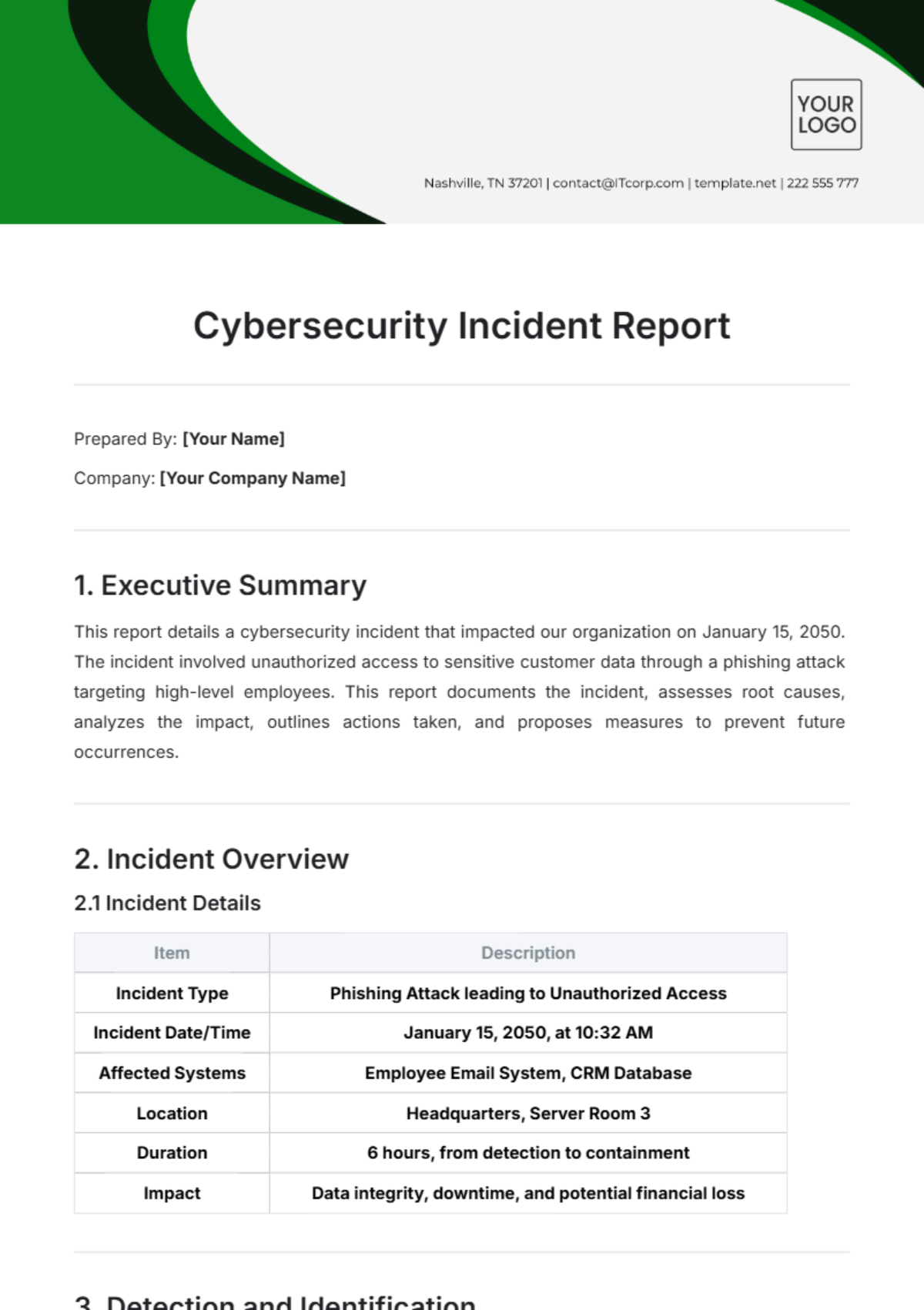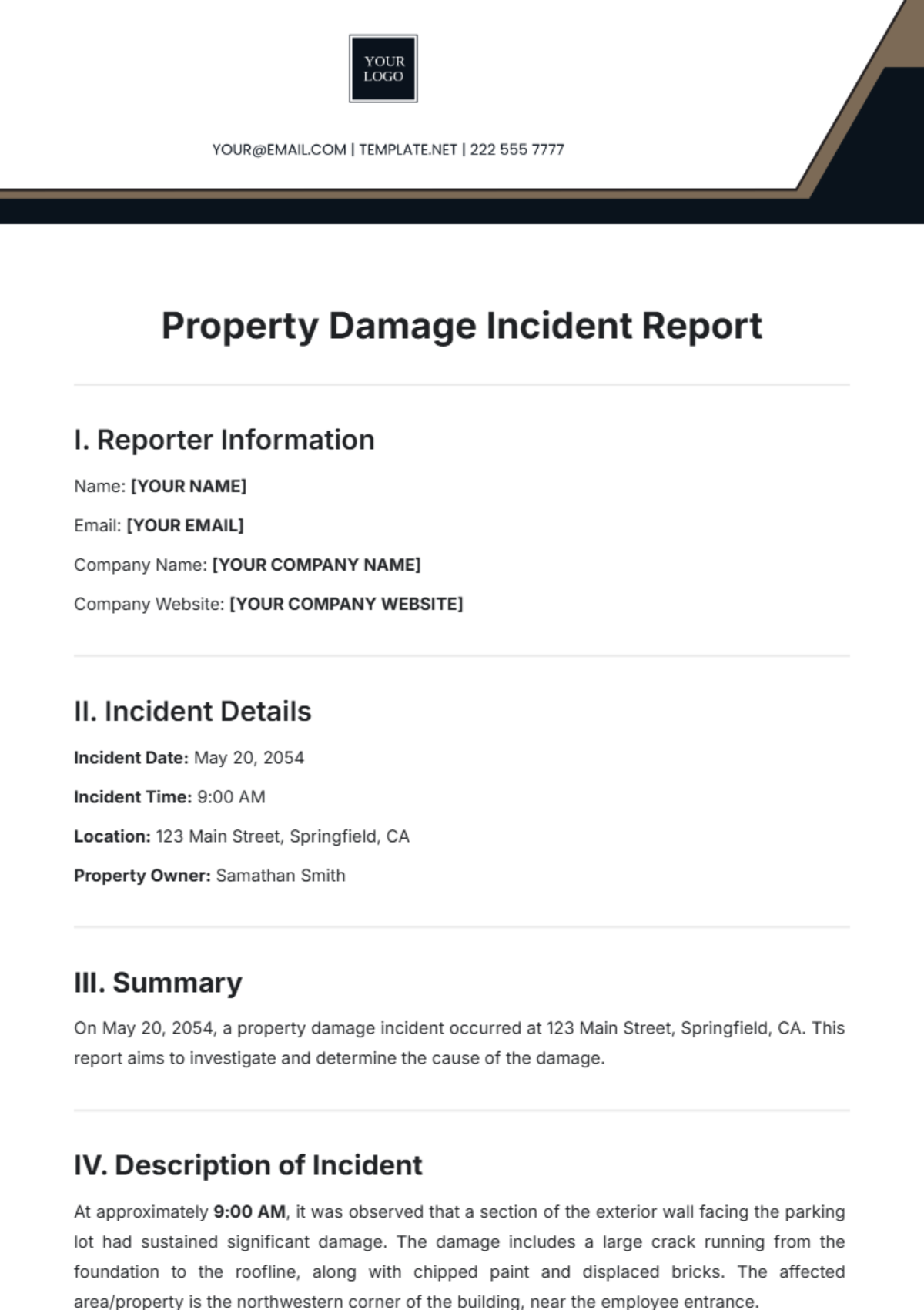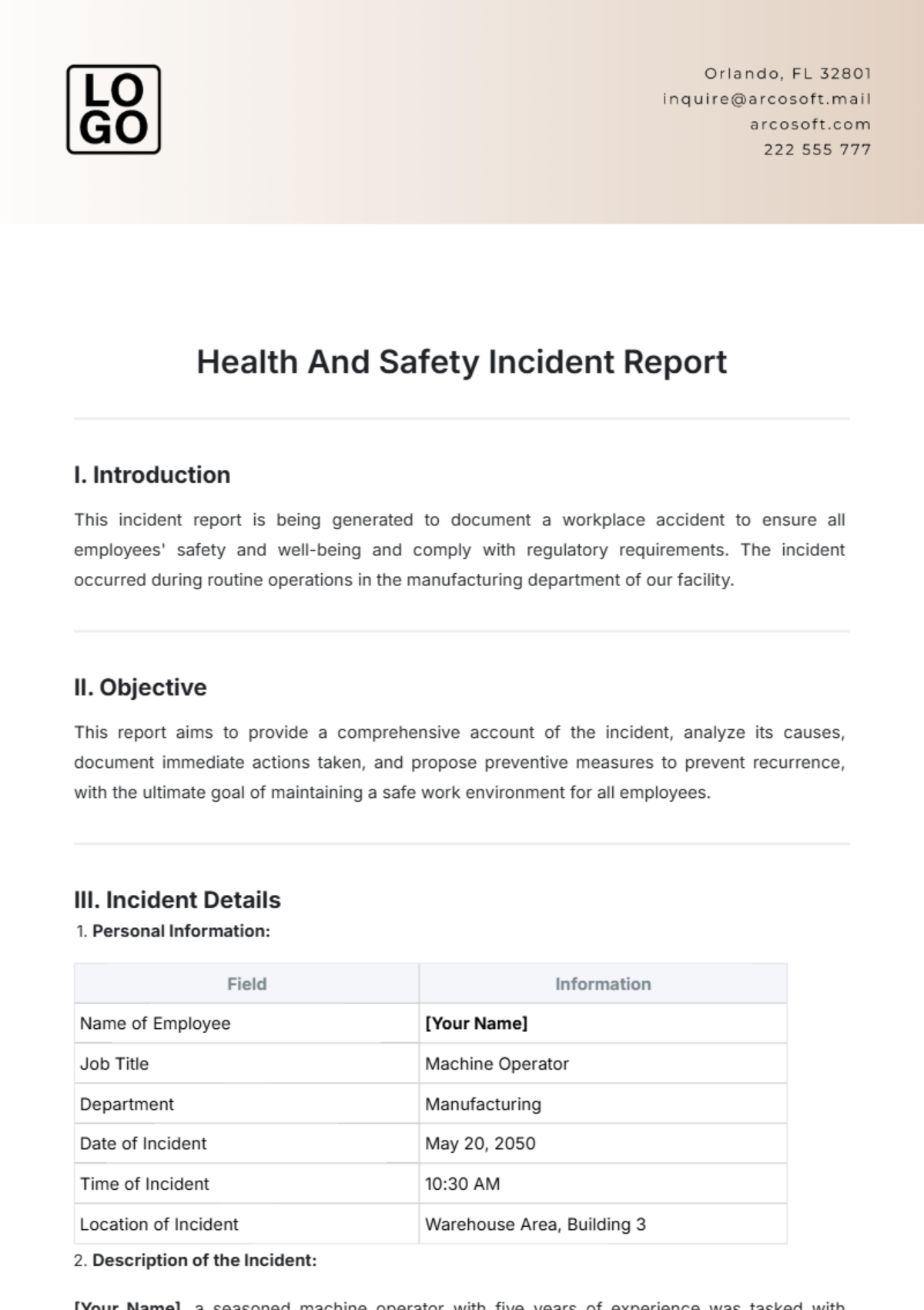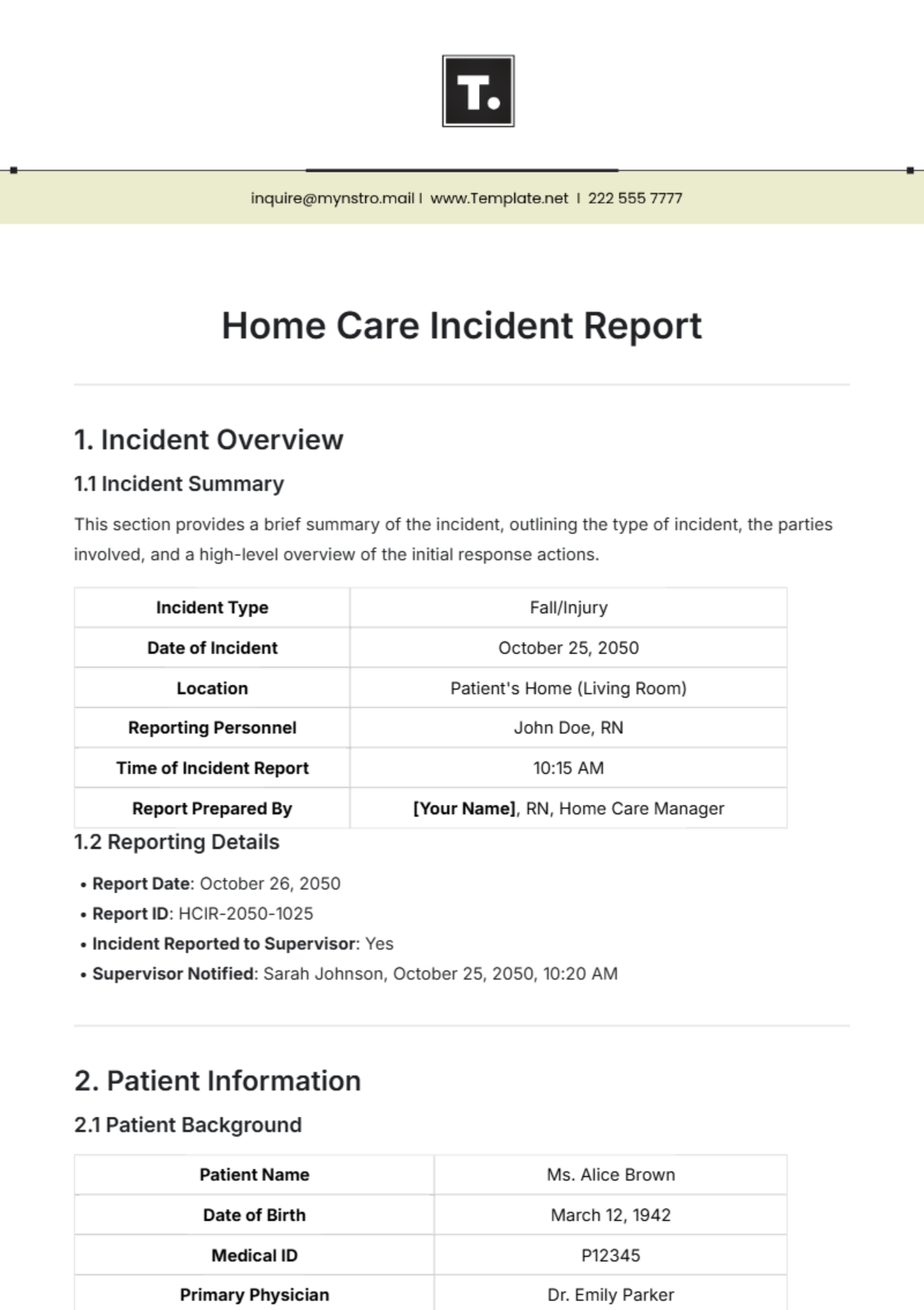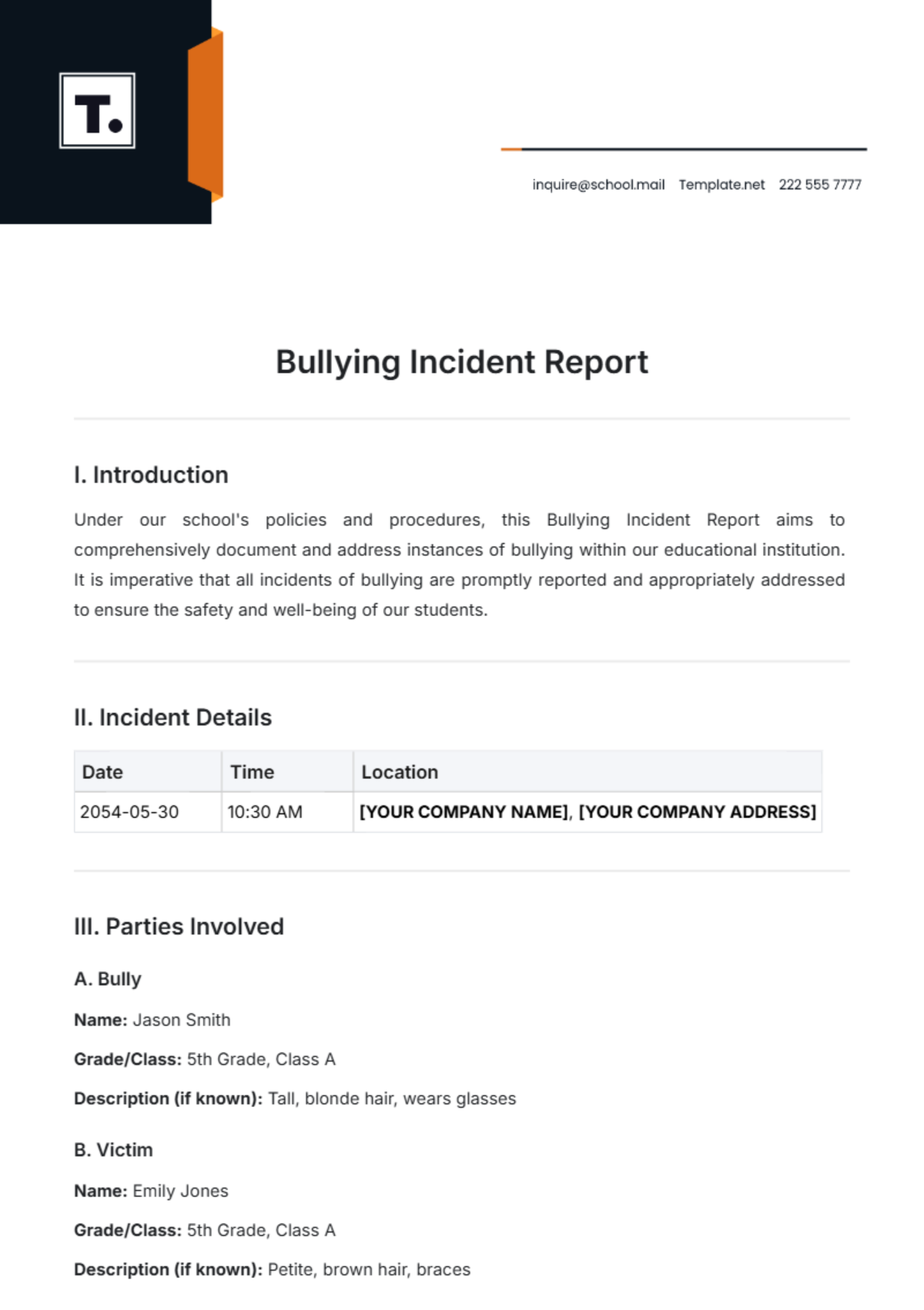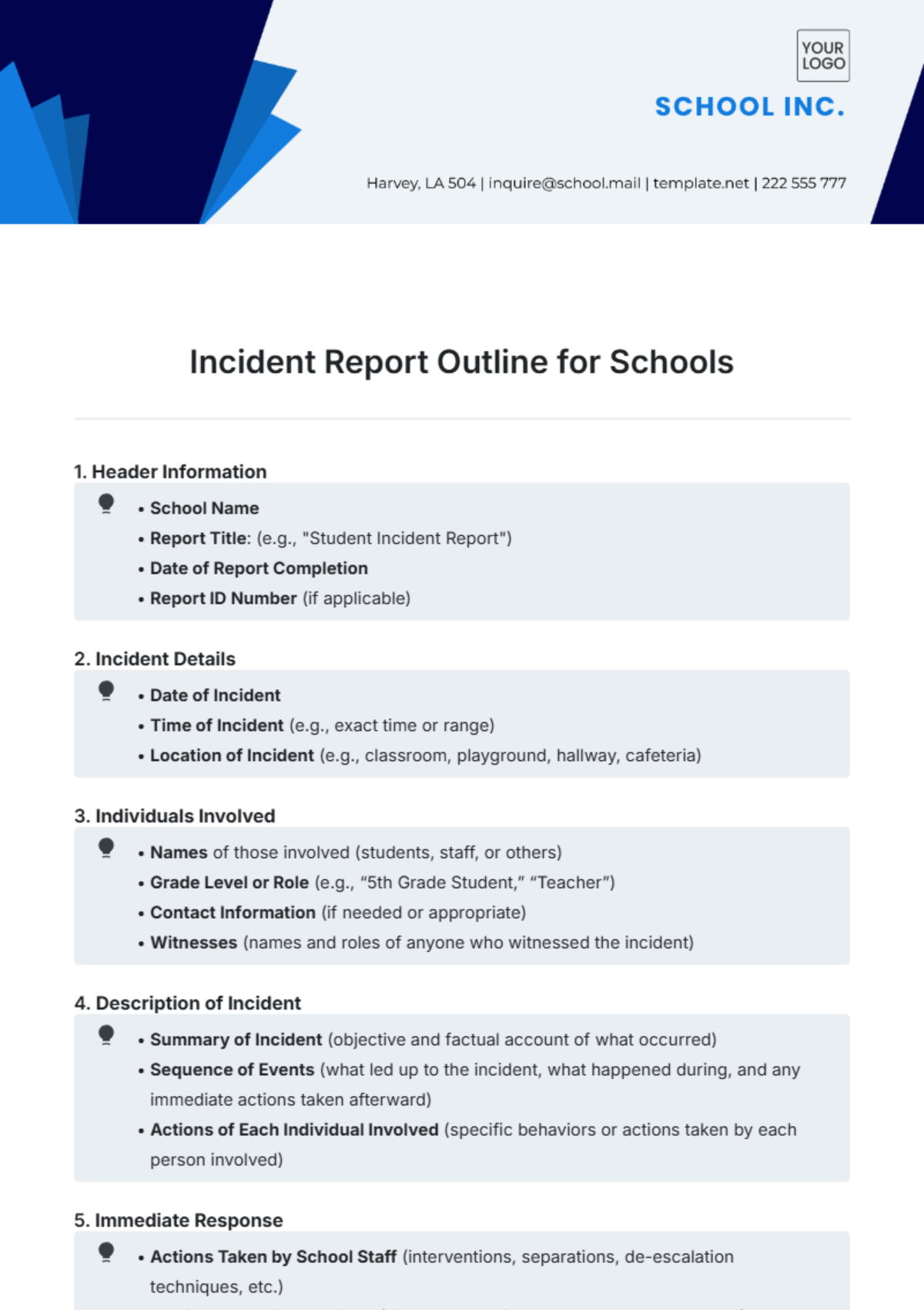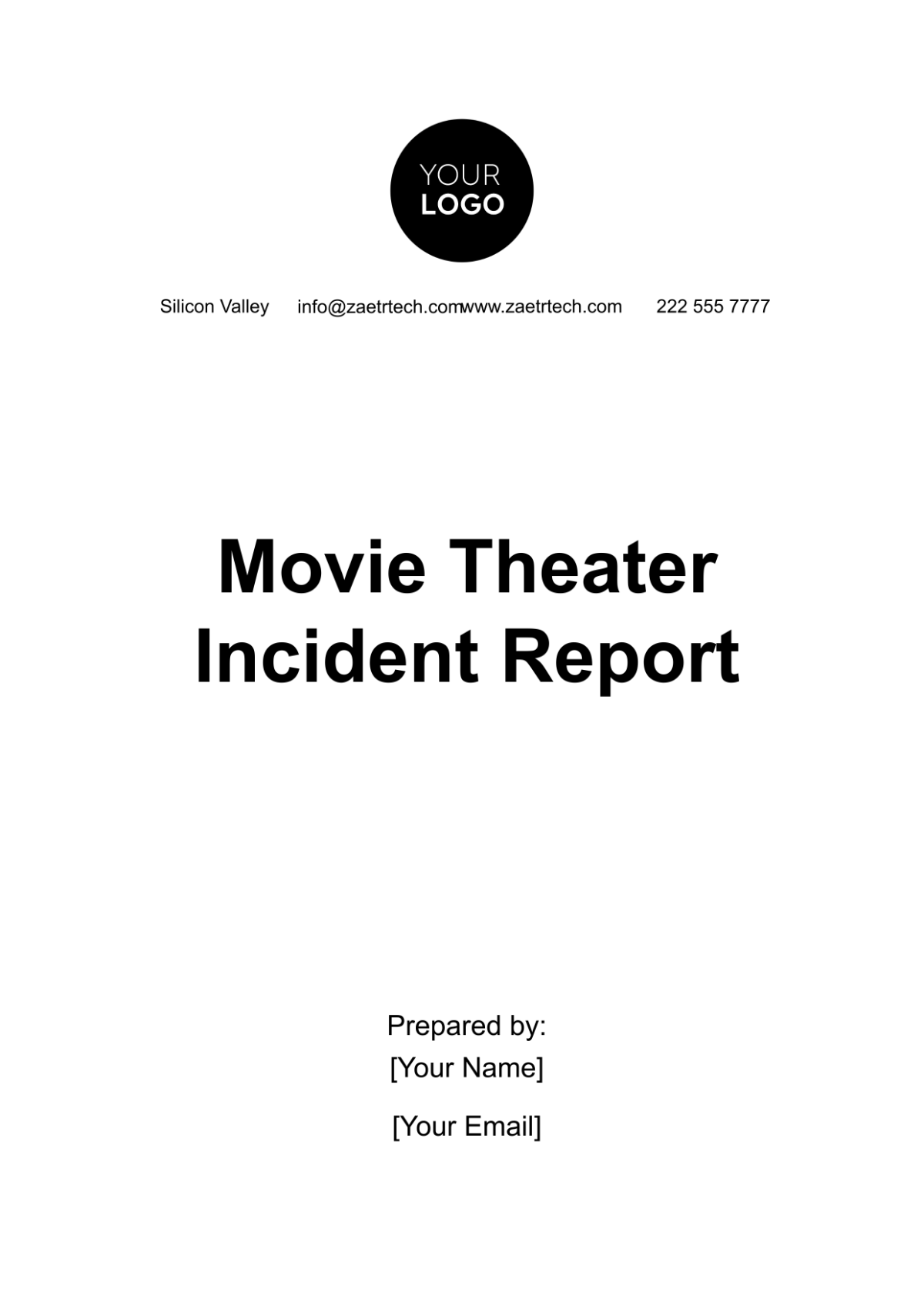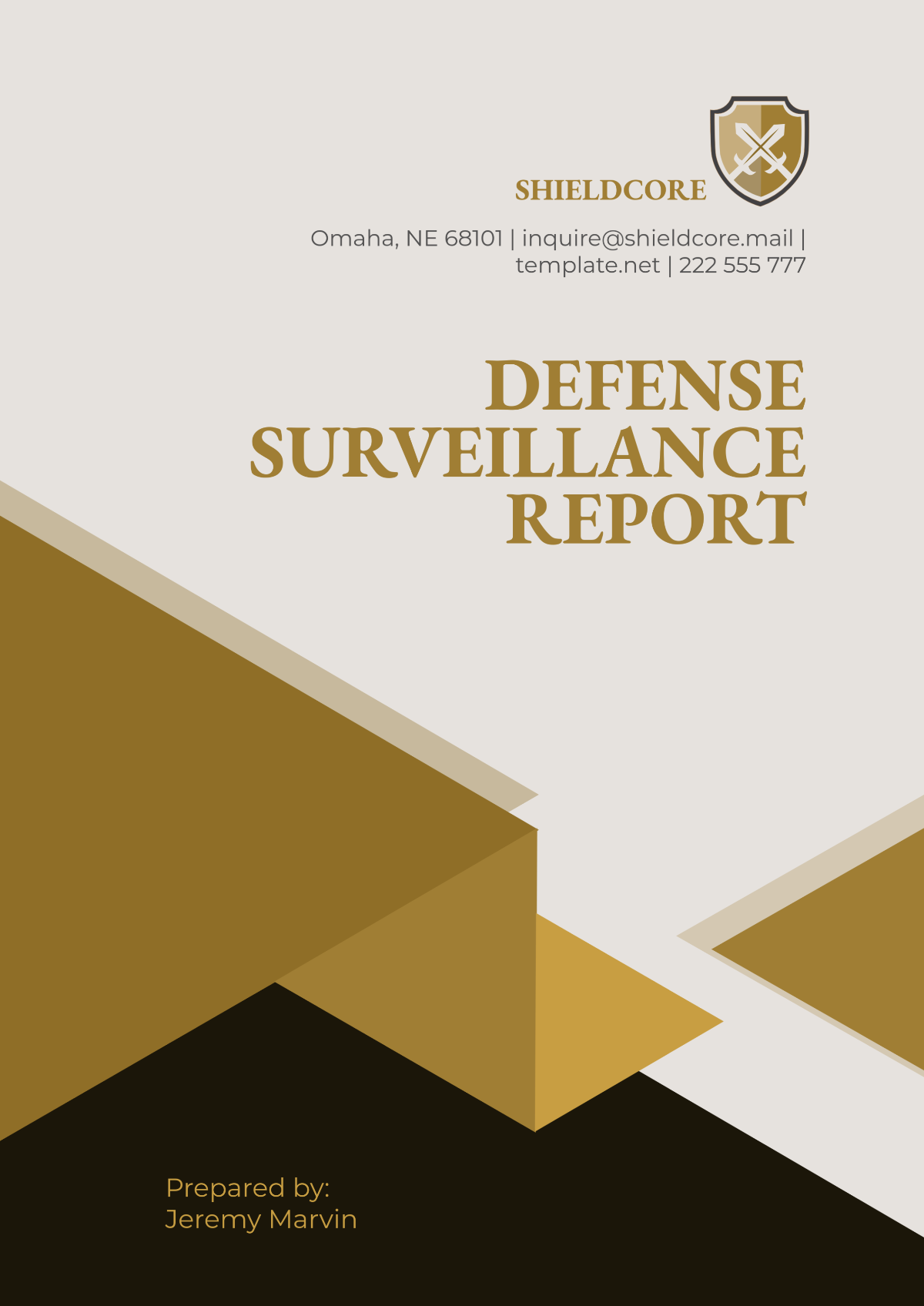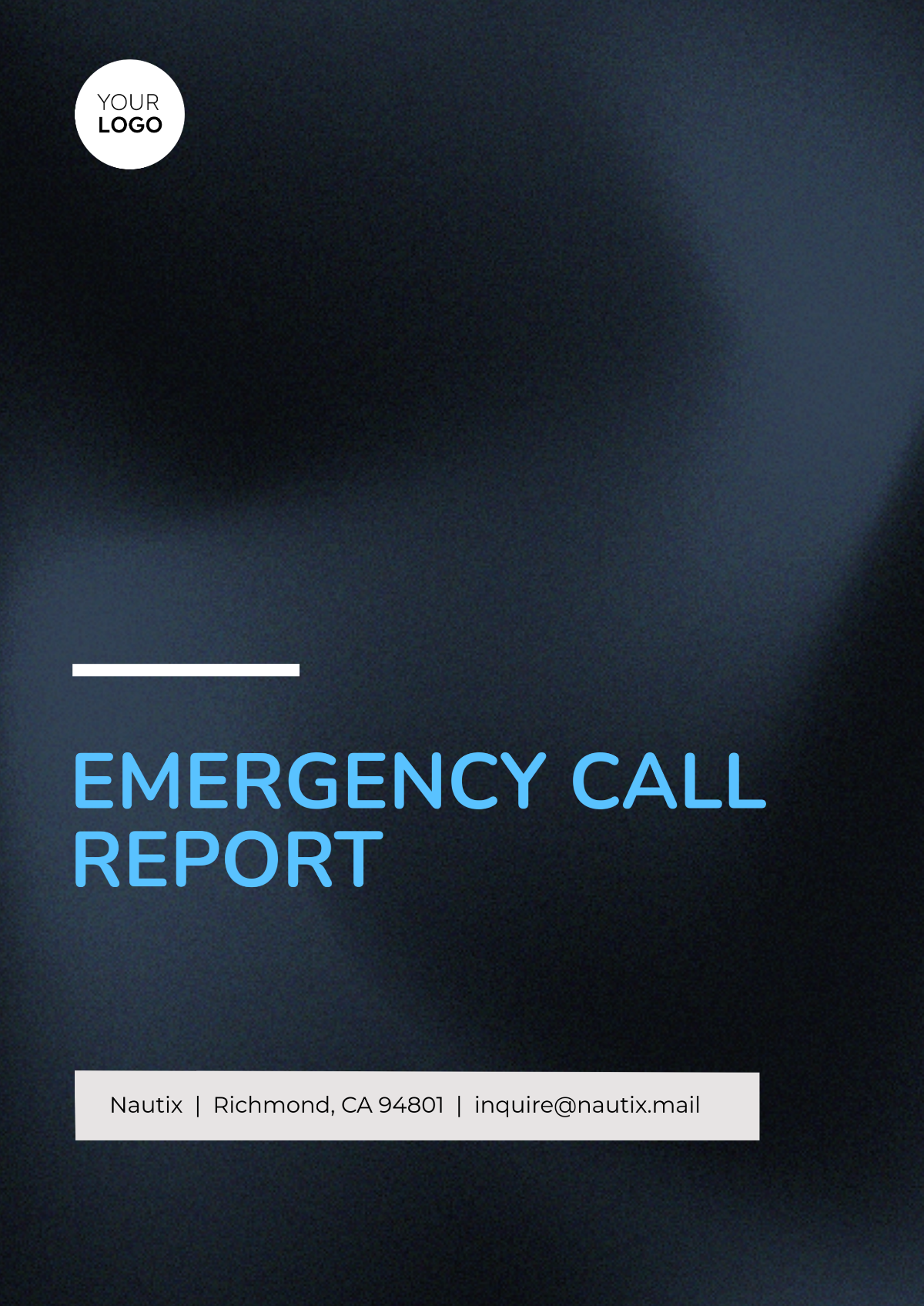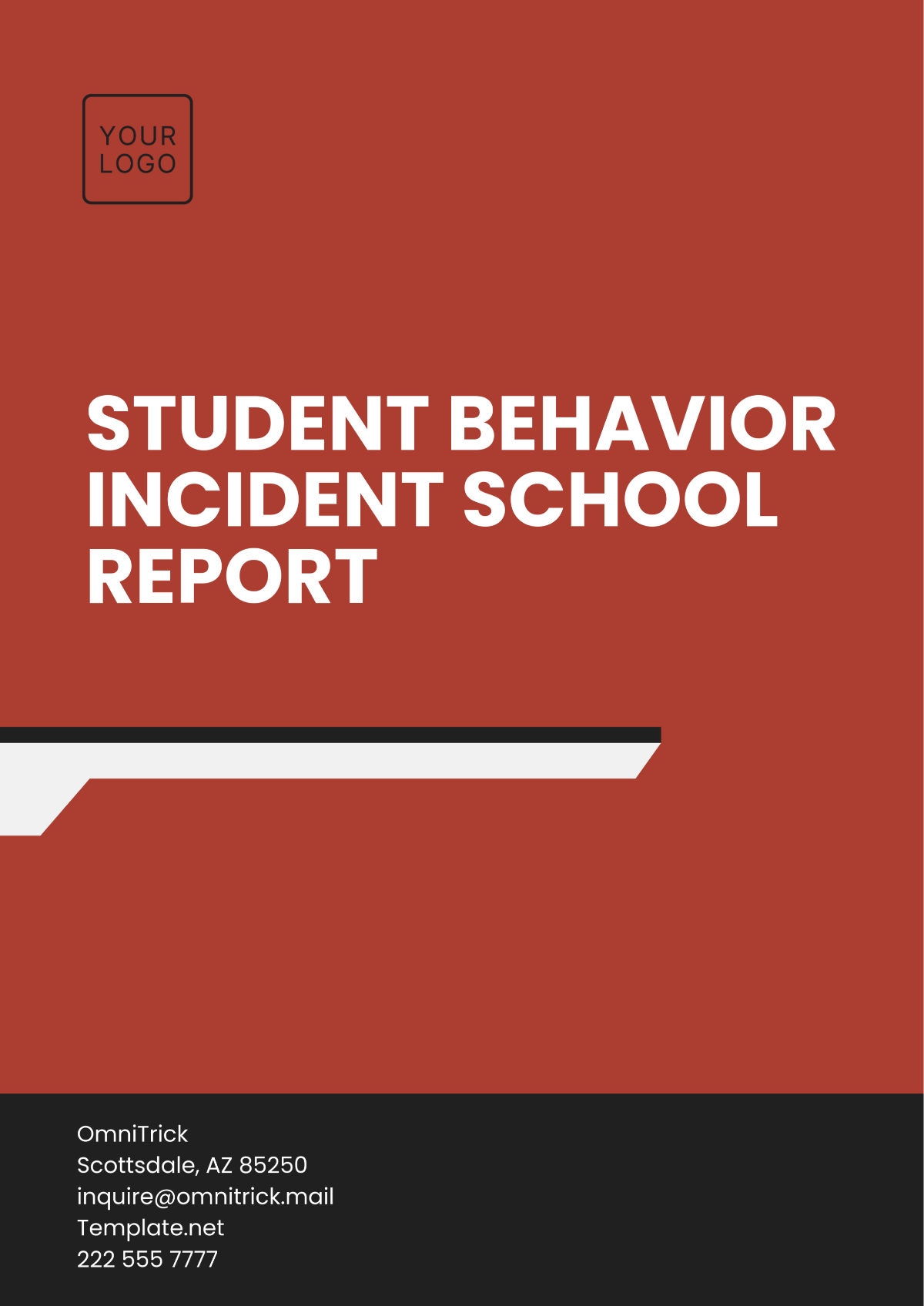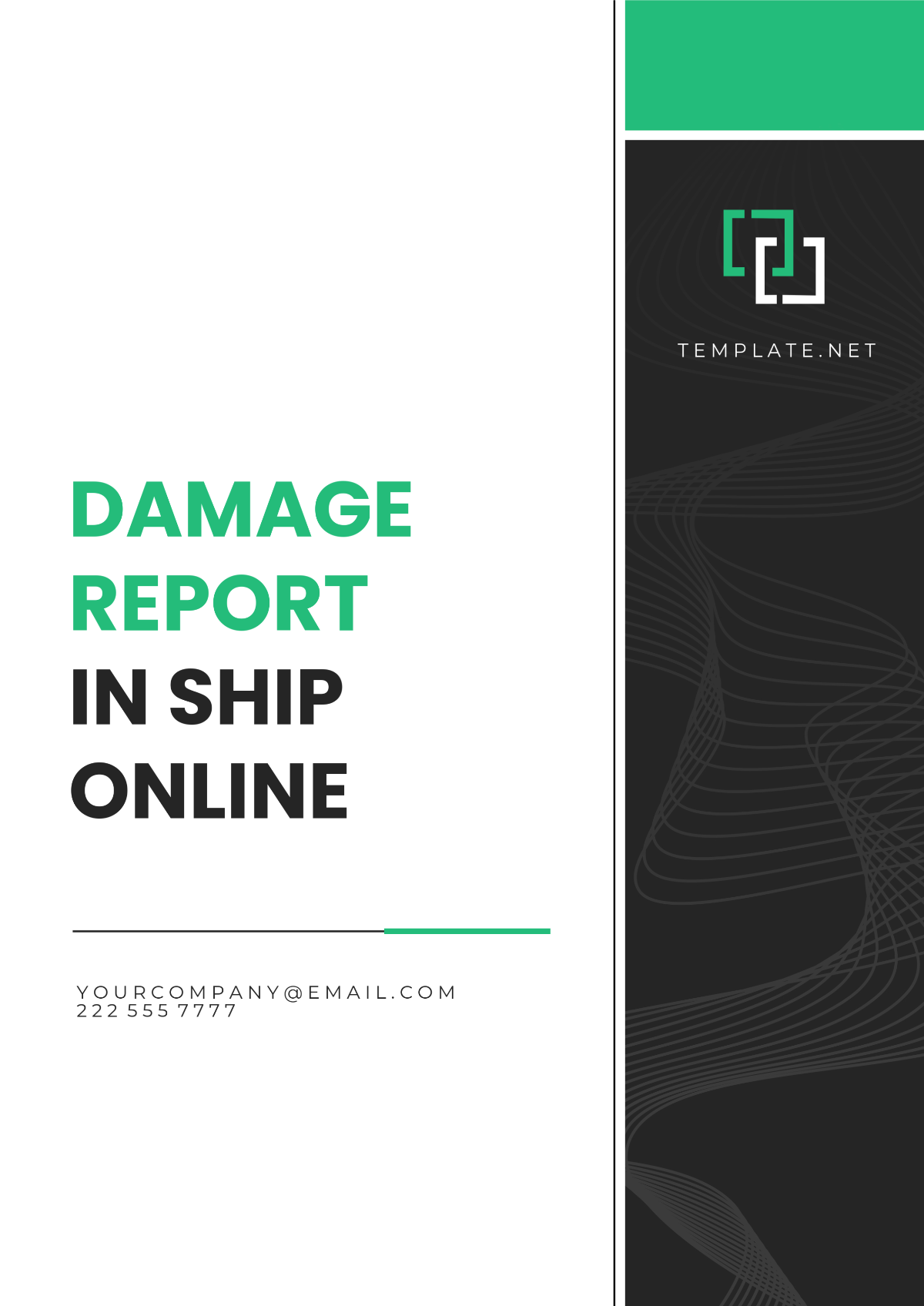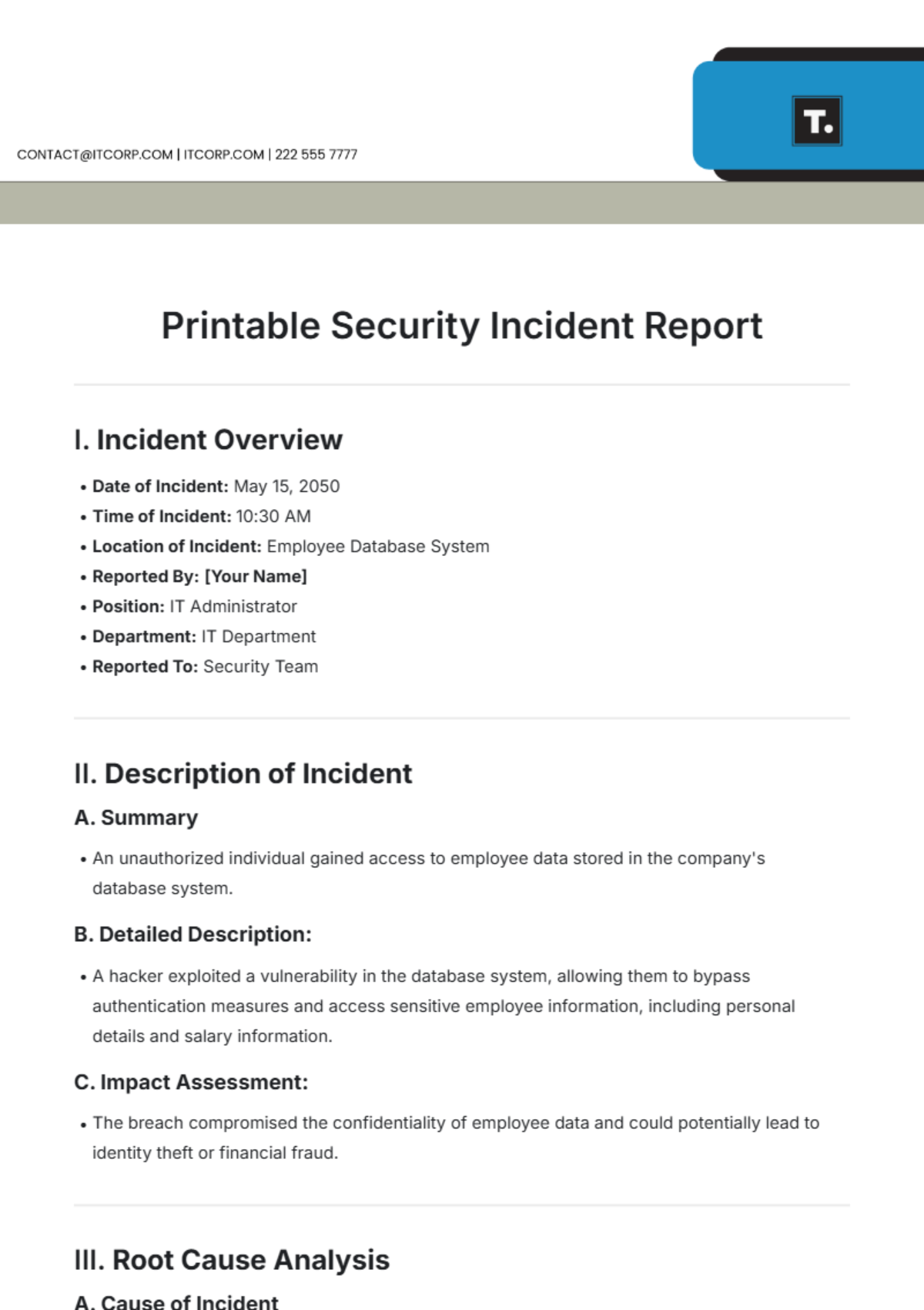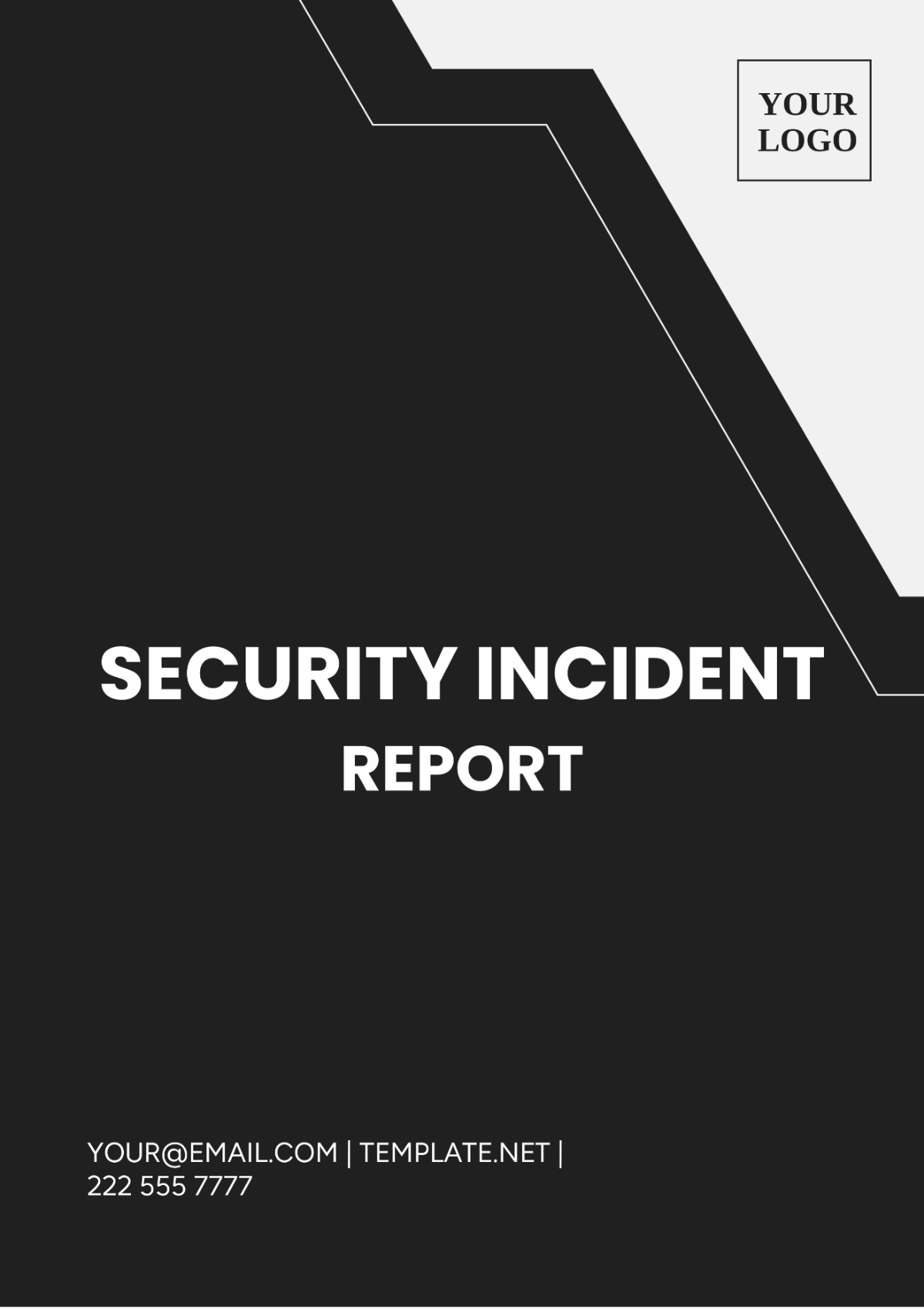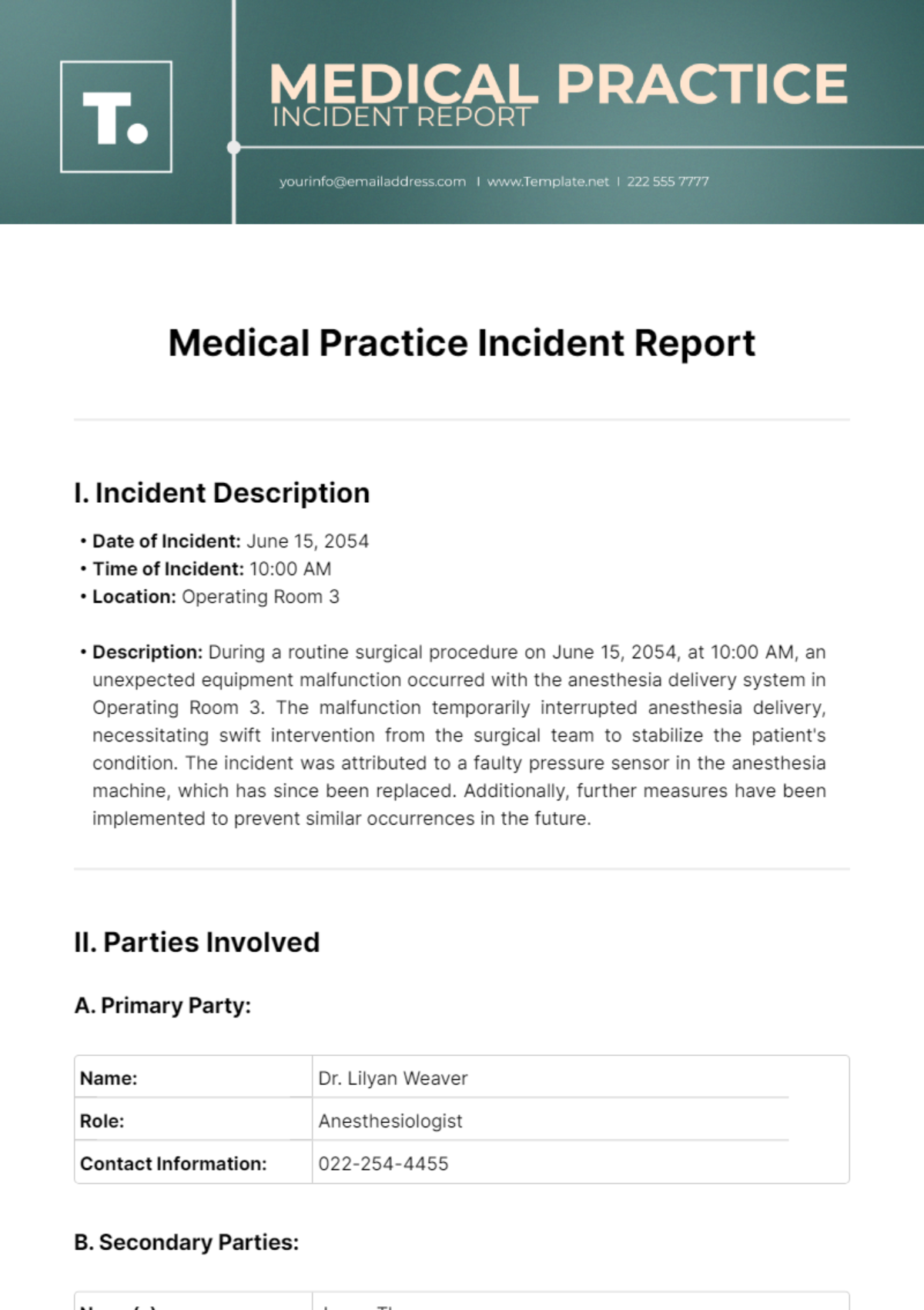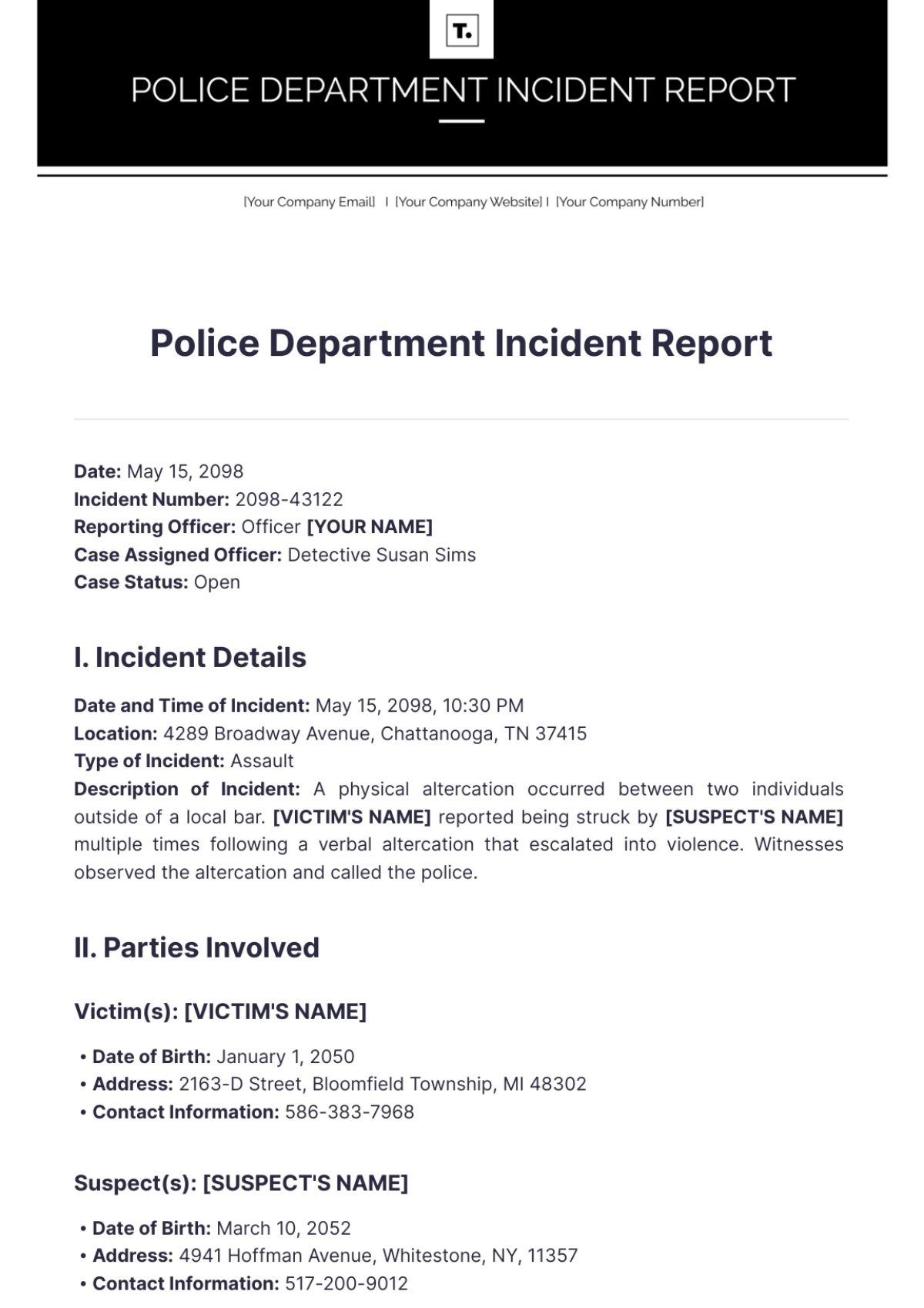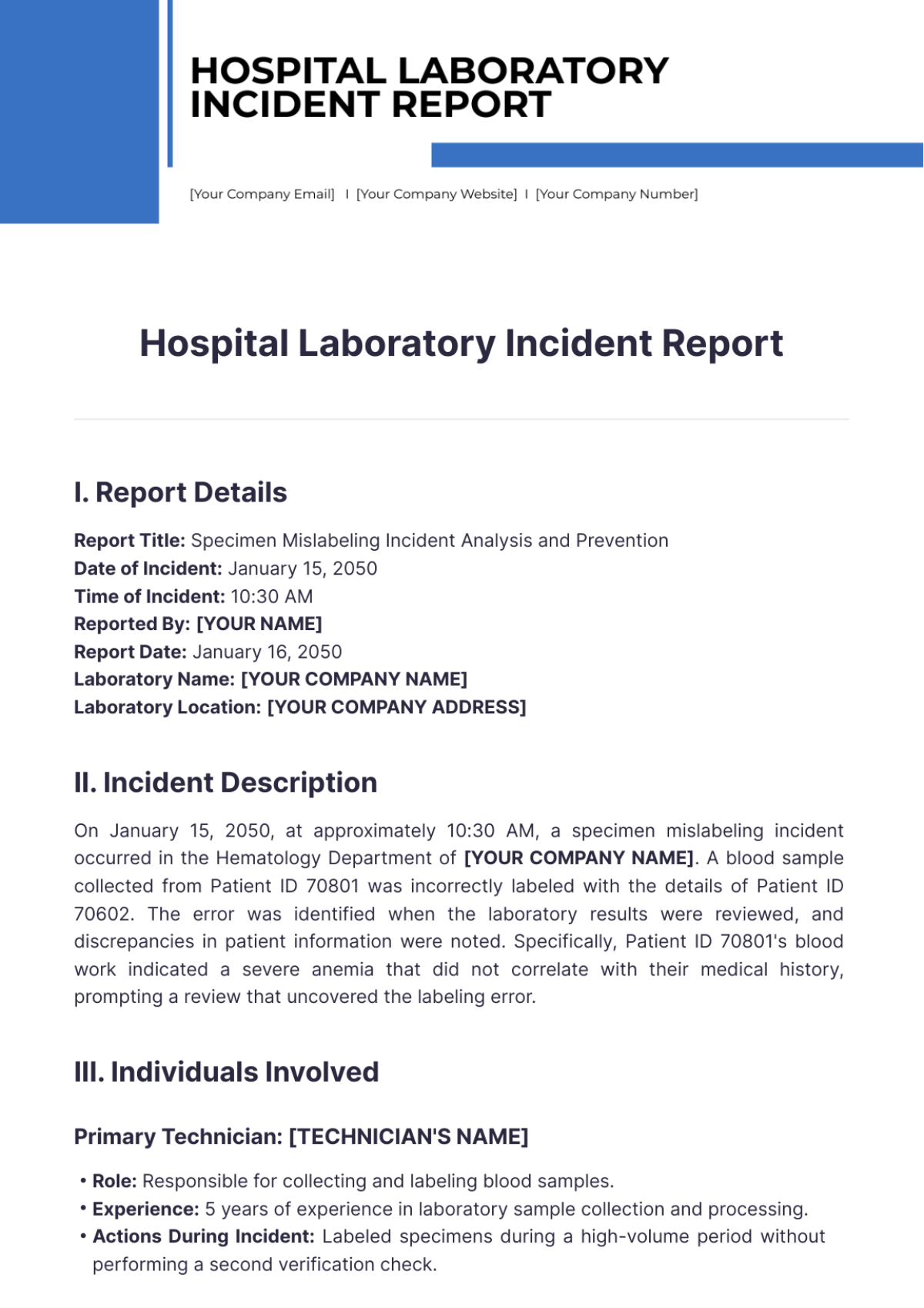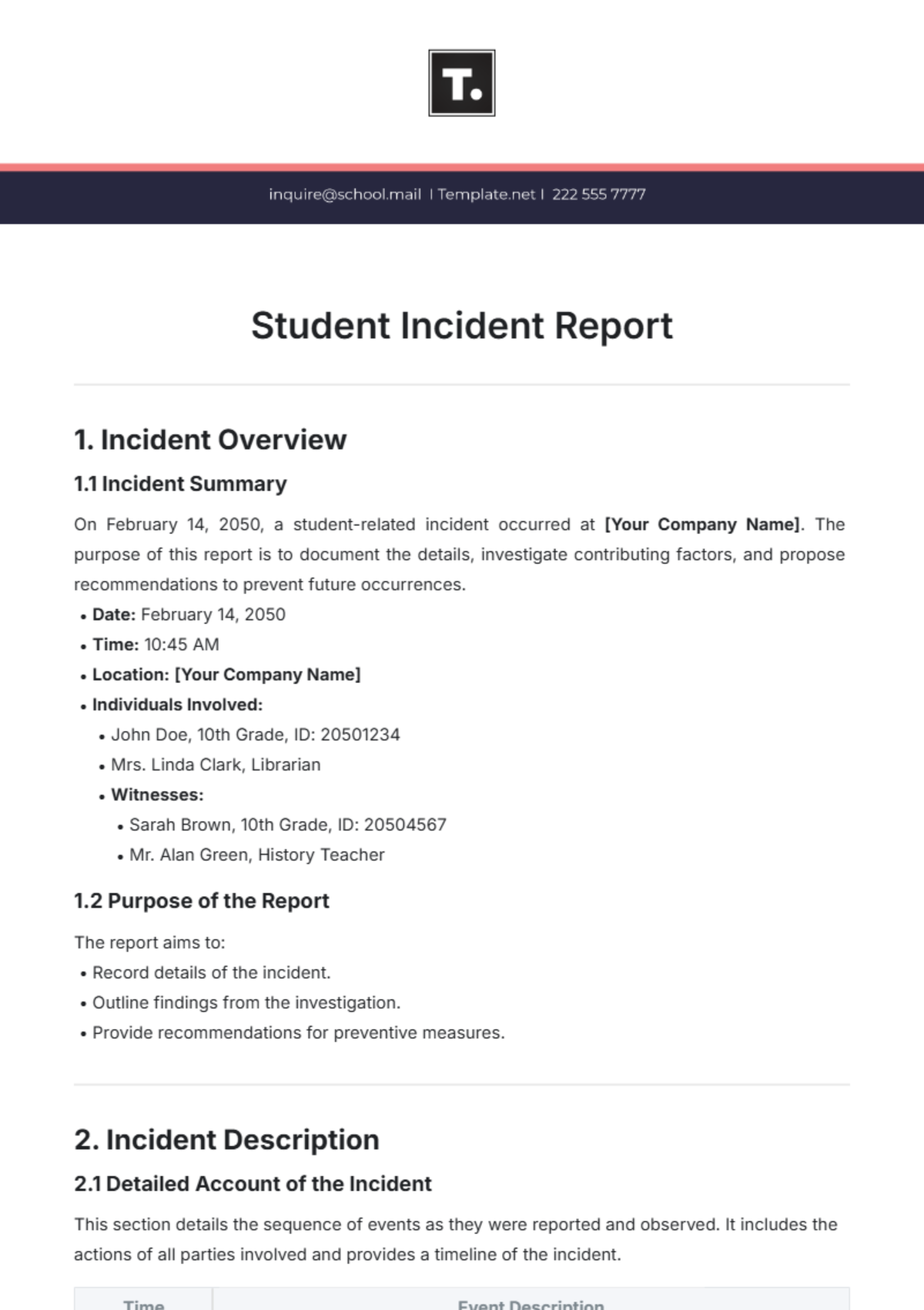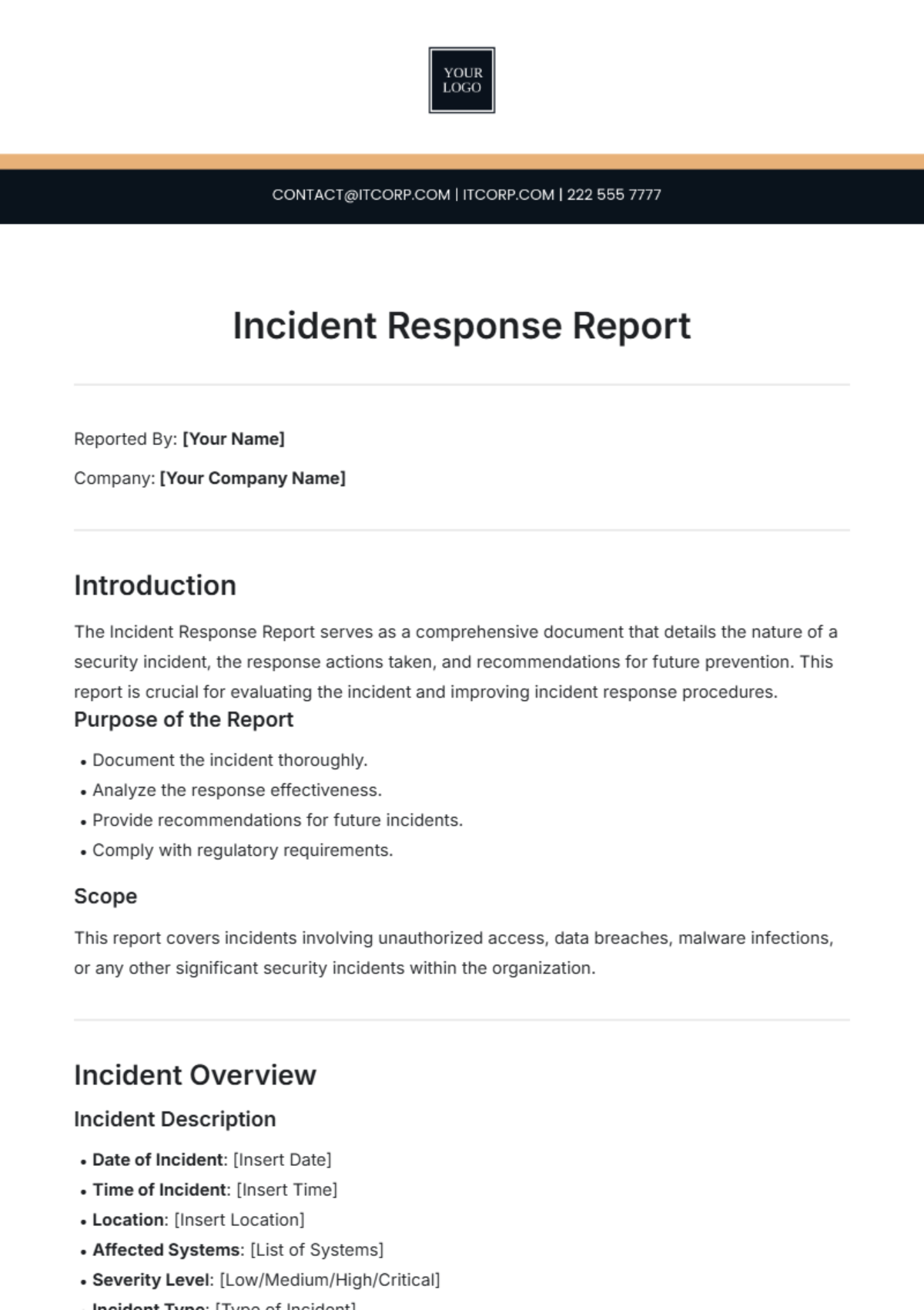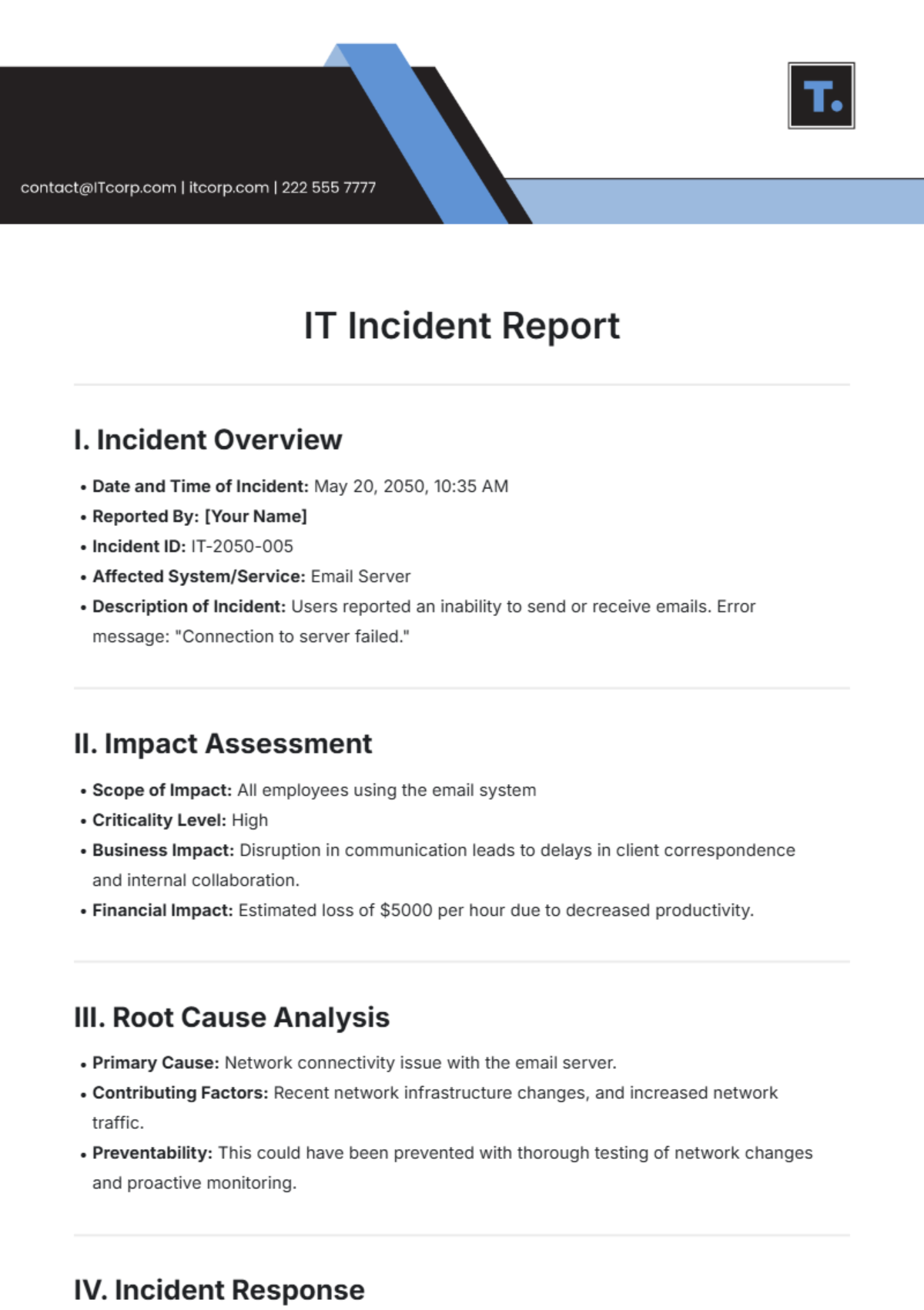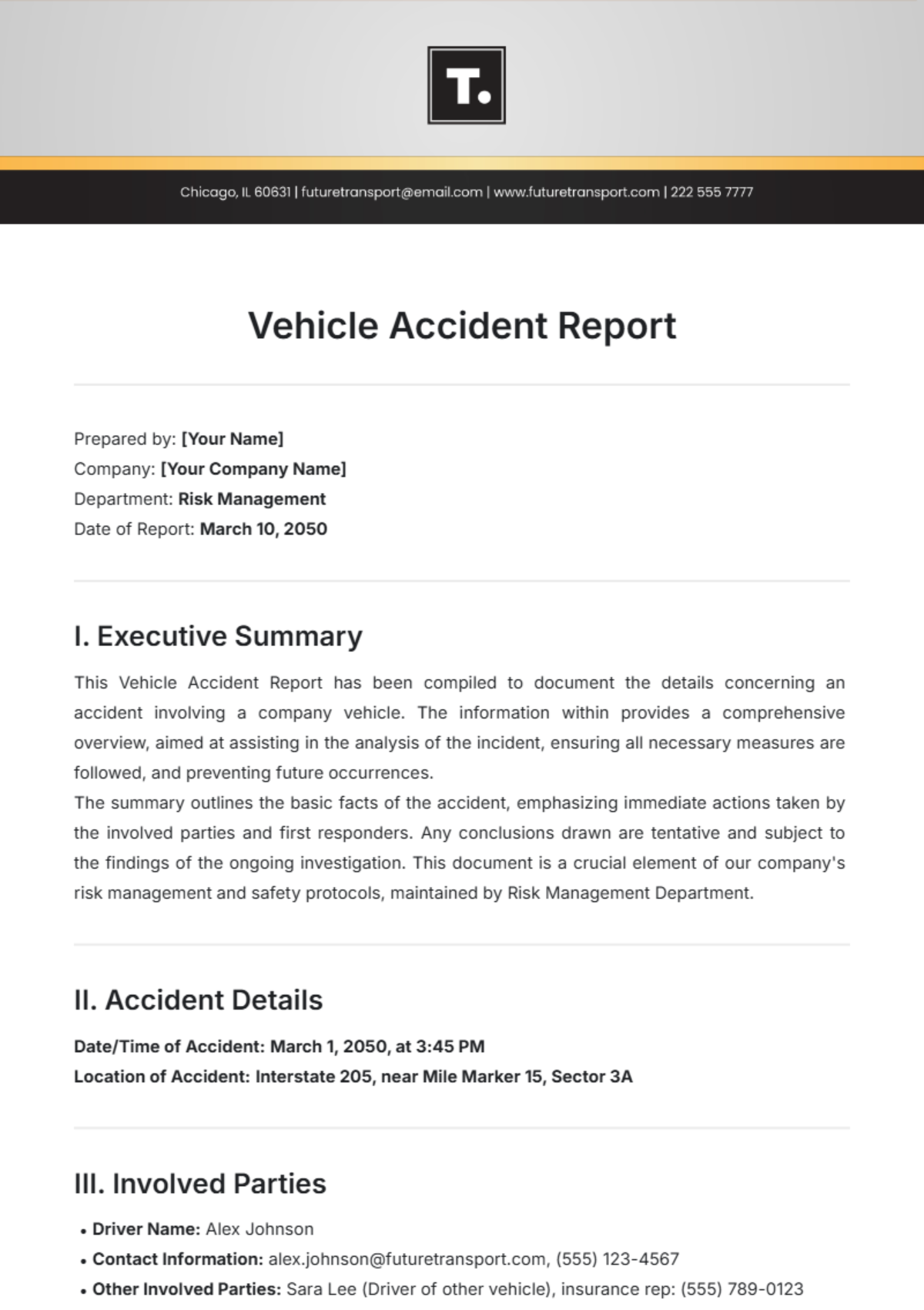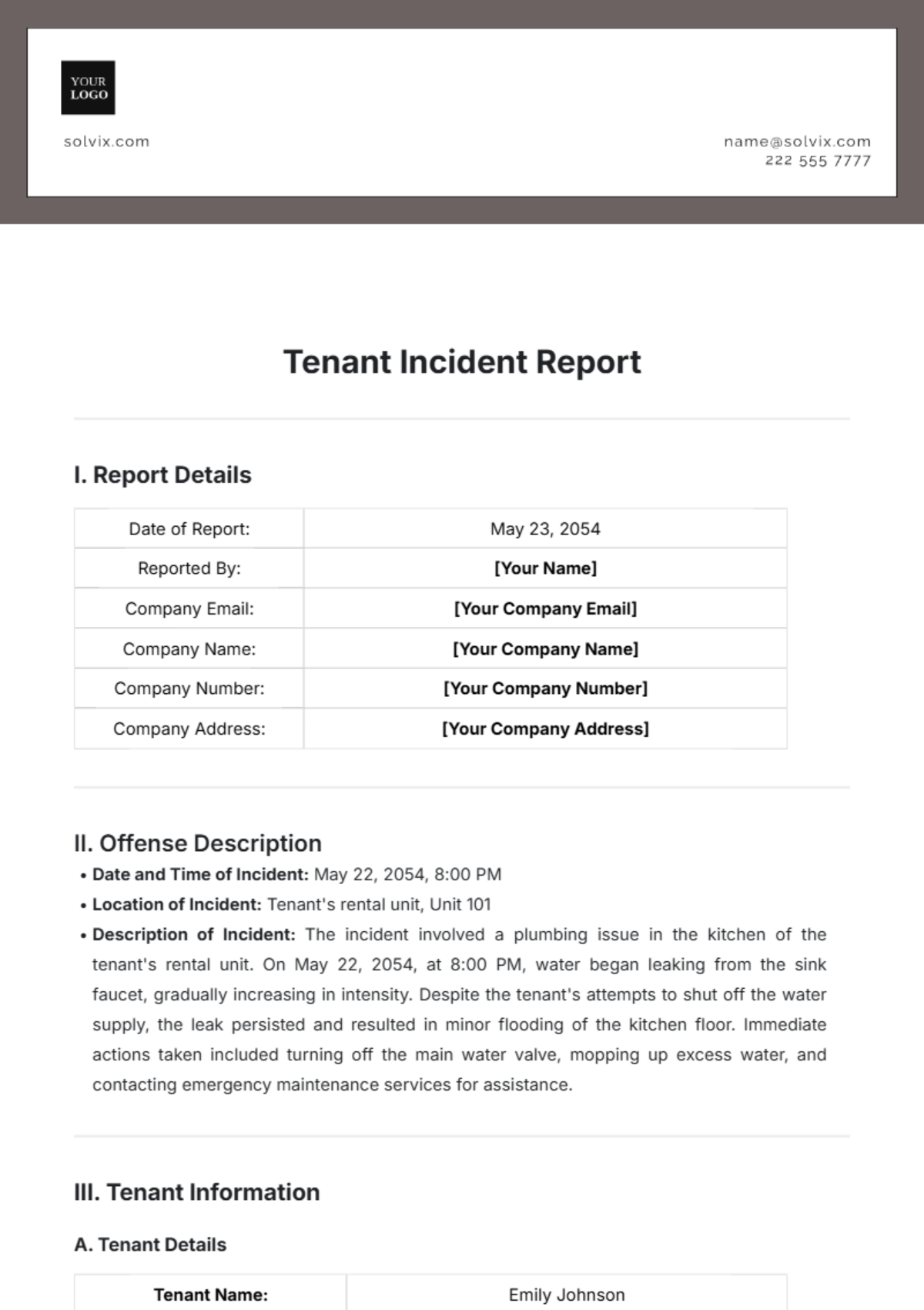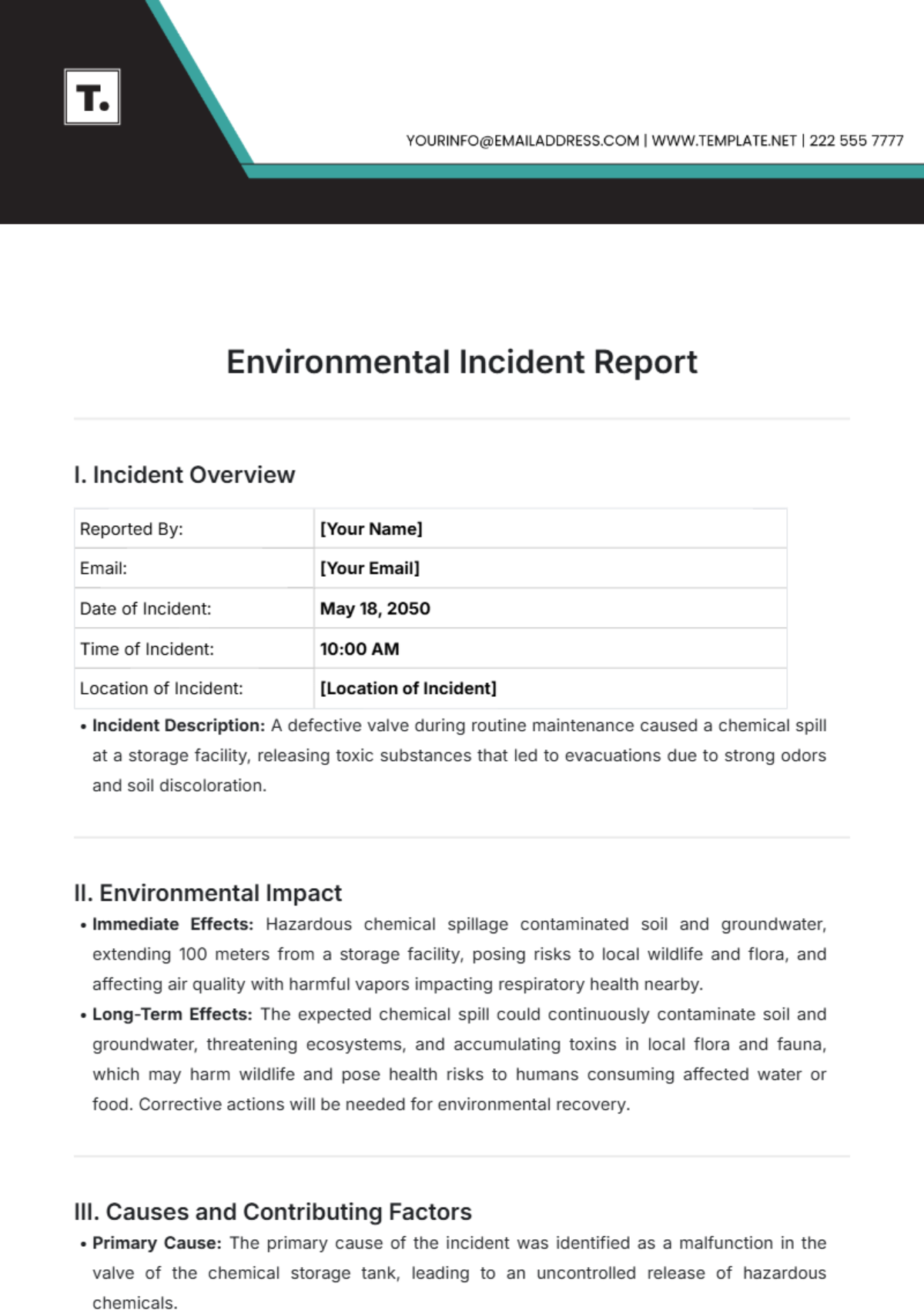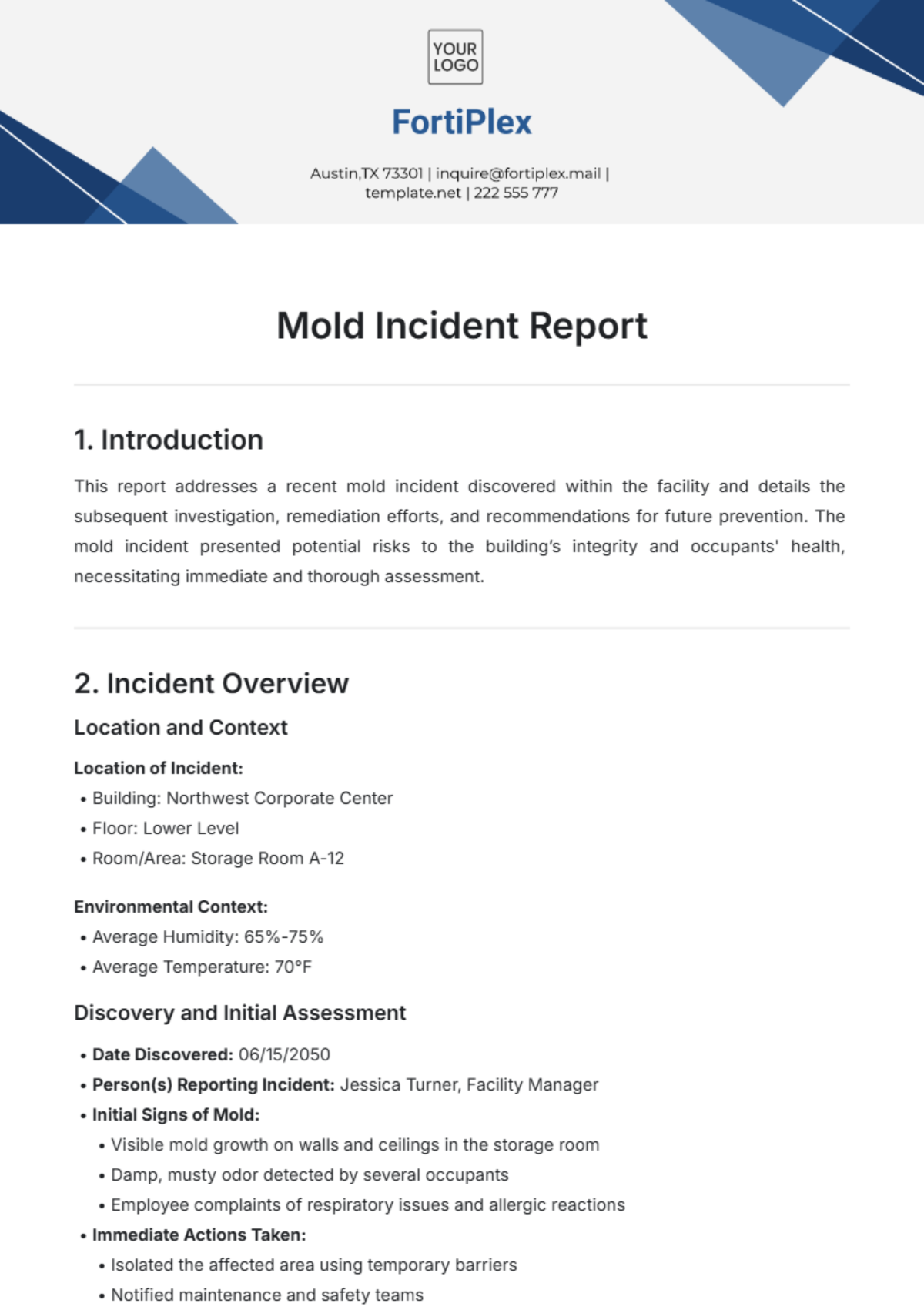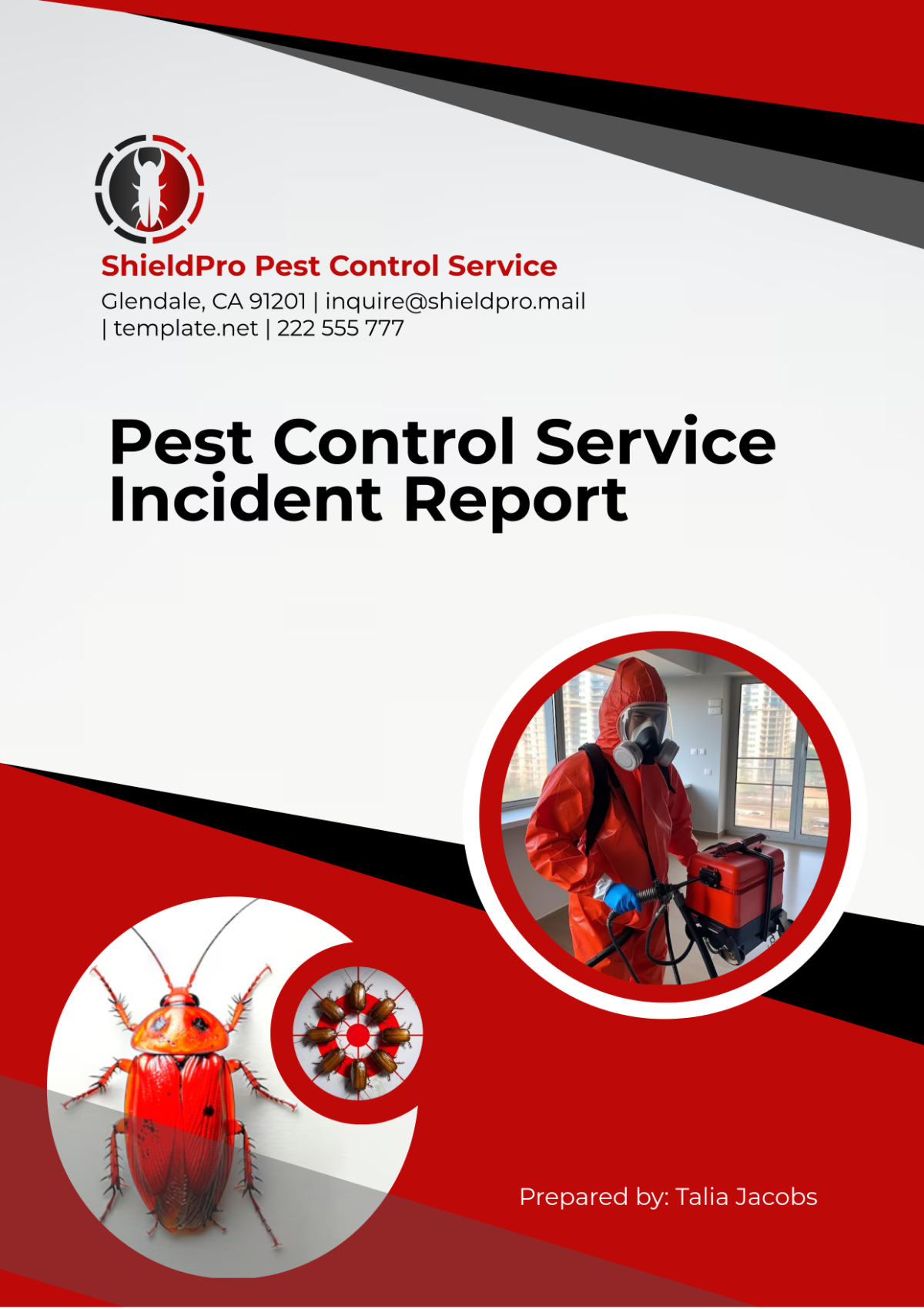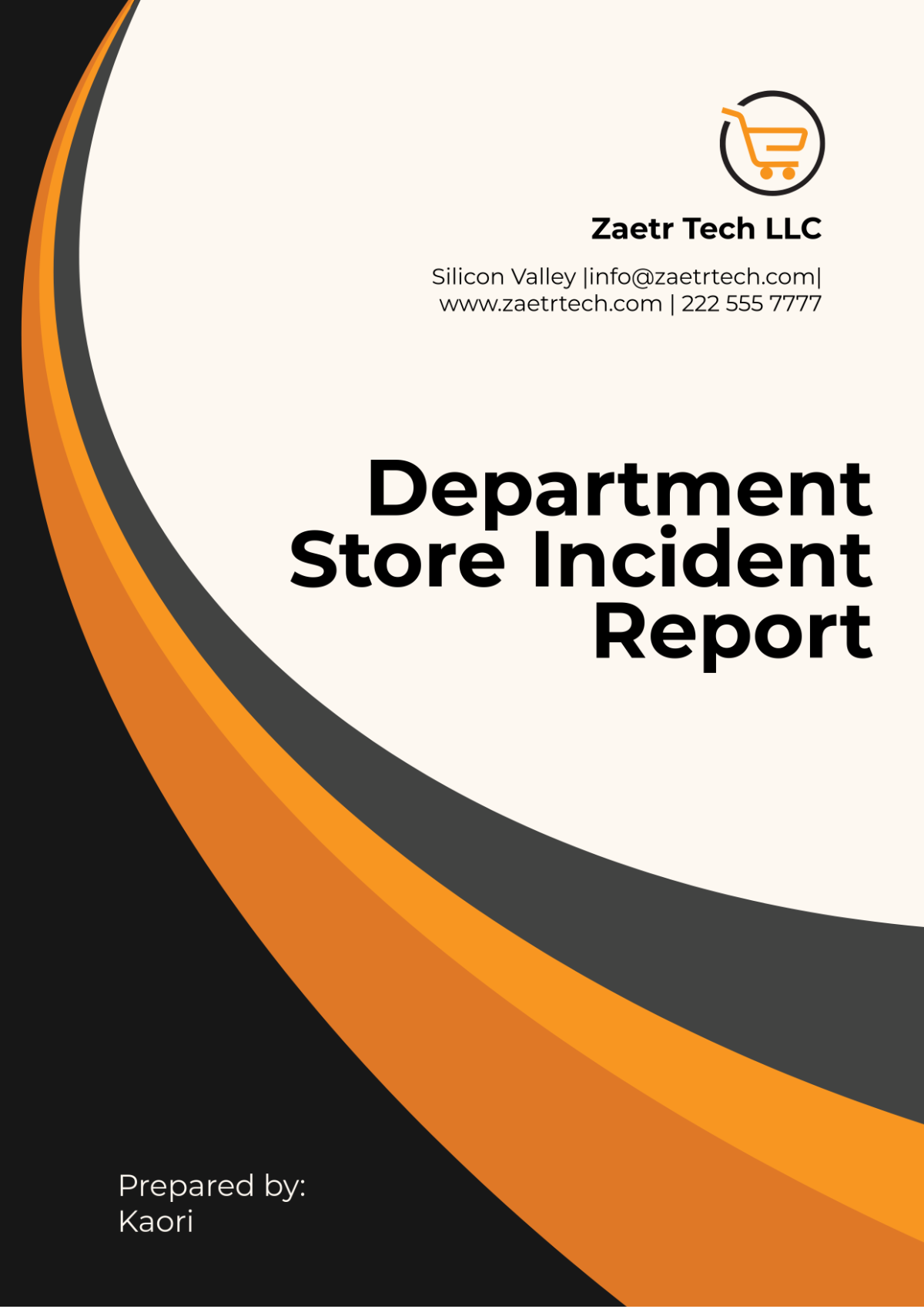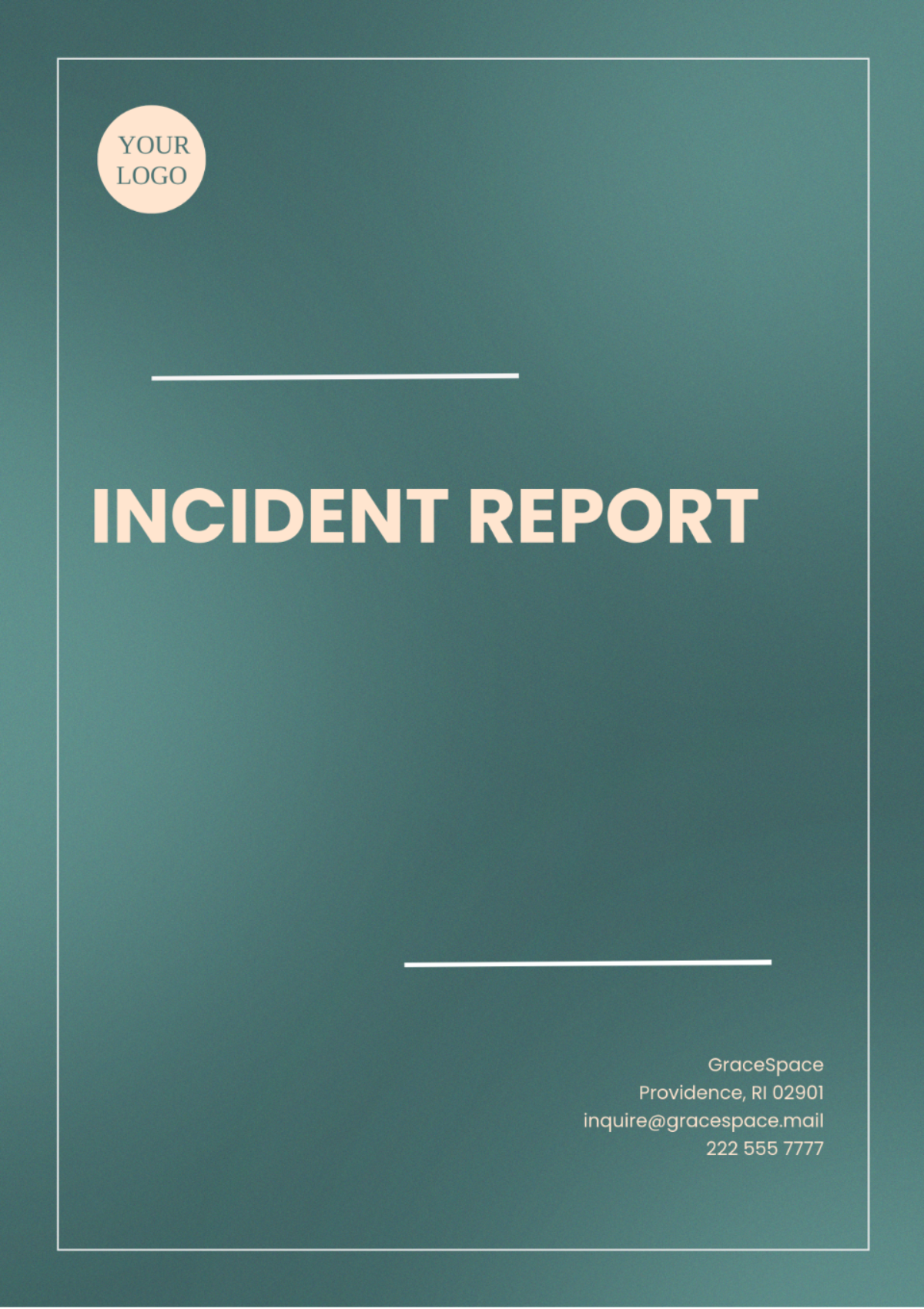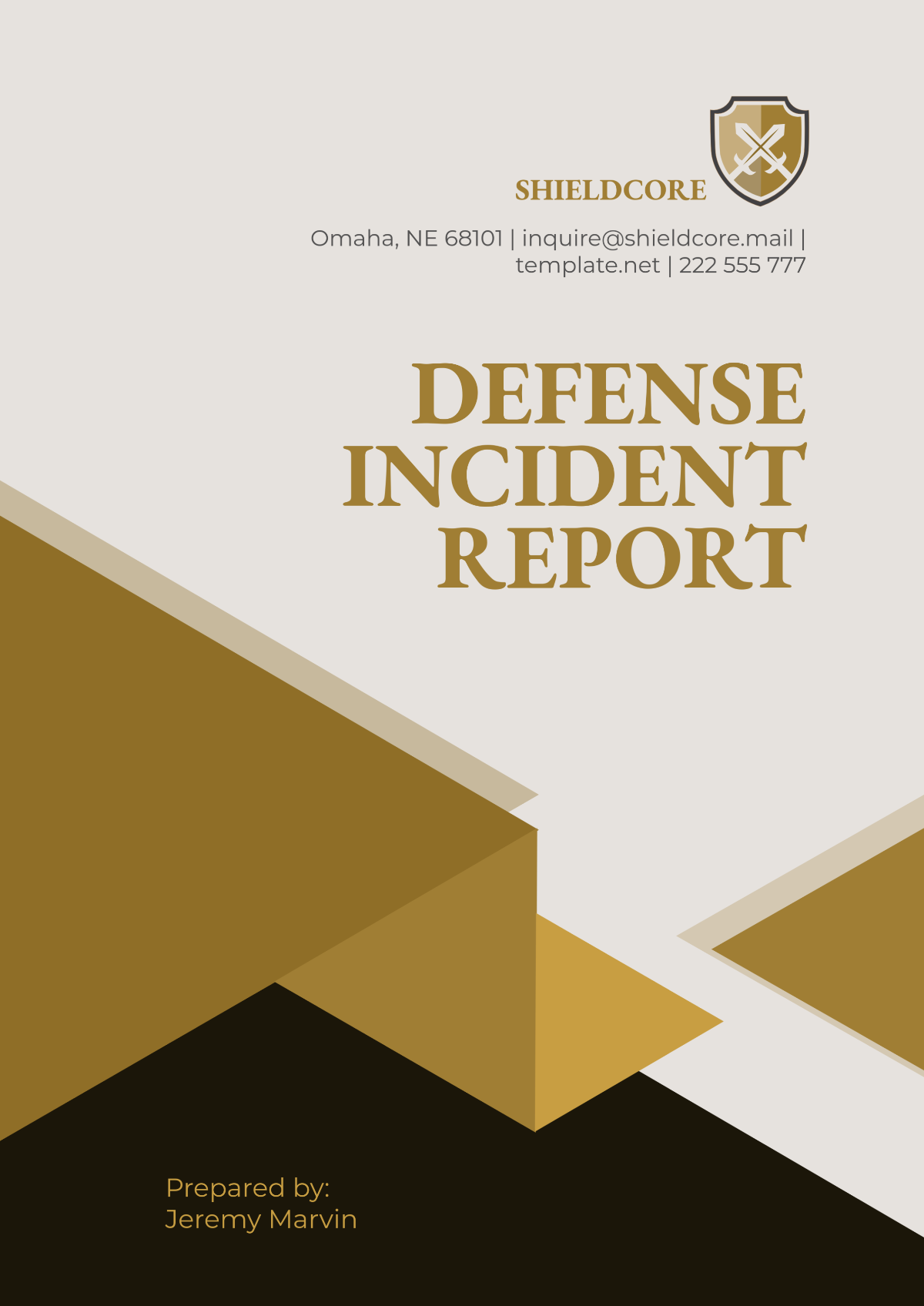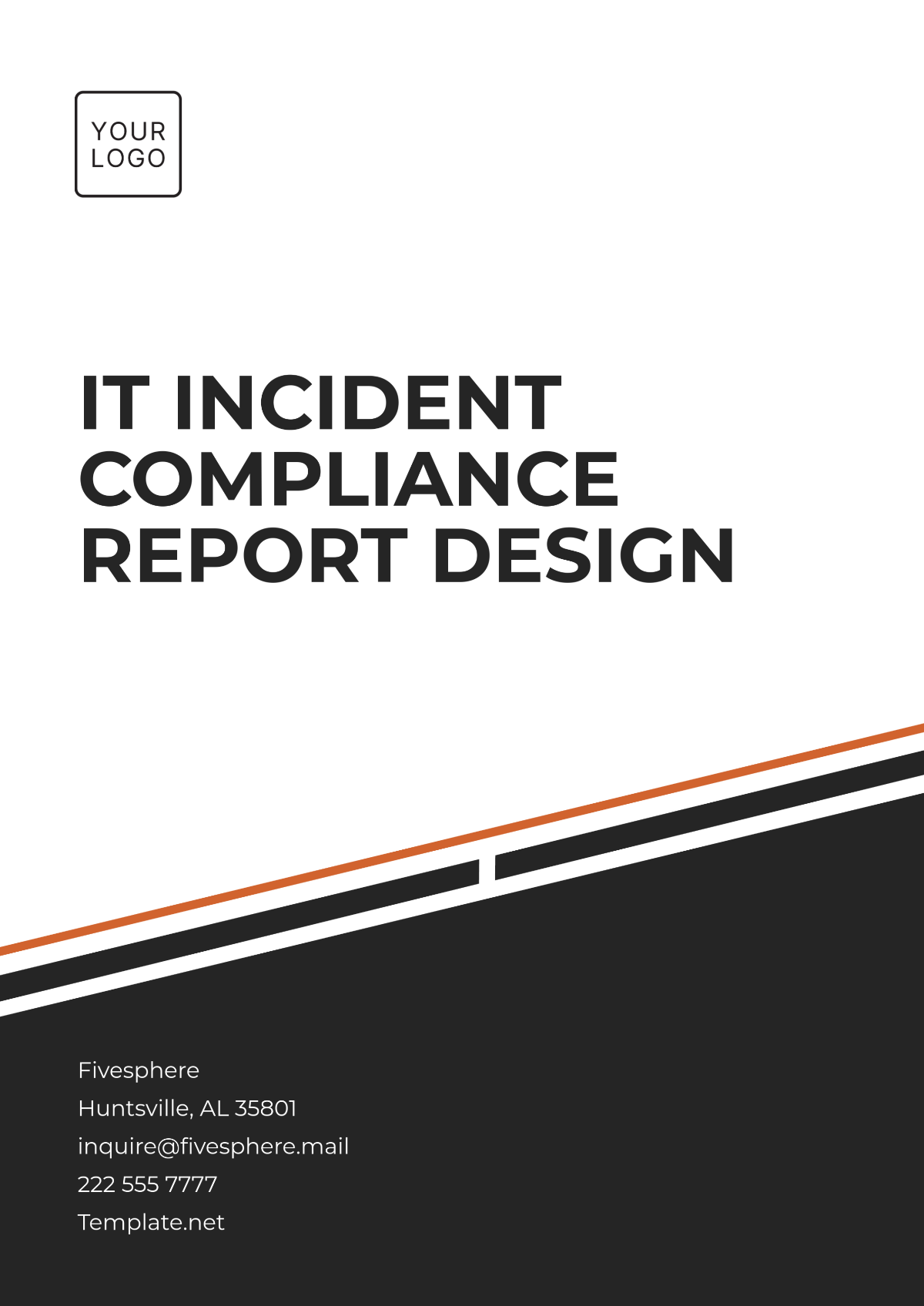Security Service Incident Report
Date of Report:
October 24, 2050
Report Number:
ISR-2050-001
I. Executive Summary
A. Incident Overview
On October 15, 2050, a significant security incident occurred at the corporate headquarters of [Your Company Name] located at [Location]. The incident involved a data breach that resulted in unauthorized access to sensitive client information and proprietary company data. The breach was detected shortly after it began, allowing the security team at [Your Company Name] to respond immediately, effectively mitigating the potential impact on operations and safeguarding critical assets. This report aims to provide a comprehensive analysis of the event, detailing the response actions taken, the impact on the organization, and recommendations to prevent similar incidents in the future.
B. Report Structure
To ensure clarity and facilitate understanding, this report is organized into several key sections:
Incident Details
Response Actions
Impact Assessment
Root Cause Analysis
Recommendations for Future Prevention
Conclusion
II. Incident Details
A. Incident Type
The incident was classified as a data breach, specifically involving unauthorized access to confidential client information and internal business documents. Initial detection occurred at 2:15 PM on October 15, 2050, when the intrusion detection system flagged unusual access patterns originating from an external IP address. The alert was triggered due to an anomaly that involved multiple login attempts within a short time frame, indicating a possible brute force attack.
B. Location of Incident
The breach occurred at the data center of [Your Company Name], located on the second floor of the main office building. This data center houses critical IT infrastructure, including servers that store sensitive client data, financial records, and intellectual property, which are vital to the company’s operations. The area is typically secured through multiple layers of security measures, including keycard access, biometric scanners, and round-the-clock surveillance by security personnel. However, the incident raised concerns about the effectiveness of these measures.
C. Duration of Incident
The unauthorized access lasted approximately 45 minutes, with the initial intrusion detected at 2:15 PM and the response team successfully isolating the breach by 3:00 PM. During this time, the unauthorized party was able to access certain files and documents before the systems were secured.
D. Involved Parties
The following personnel were directly involved in managing and responding to the incident at [Your Company Name]:
Name | Role | Responsibility |
|---|---|---|
John Smith | Chief Security Officer | Oversaw the entire response operation, making executive decisions regarding containment and communication. |
Sarah Johnson | IT Security Manager | Handled digital security protocols and managed the forensic investigation. |
Mike Lee | Physical Security Lead | Managed onsite security, ensuring physical access was controlled and monitored. |
Emily Davis | Incident Response Coordinator | Acted as the liaison between internal teams and external law enforcement during the incident. |
External Parties Involved:
CyberSecure Solutions: Provided third-party security monitoring and forensic investigation services post-incident.
Local Law Enforcement Agency: Notified post-incident to assist with a potential criminal investigation.
III. Response Actions
A. Immediate Actions
Upon detecting the breach, the following immediate response actions were initiated:
Isolation of the Breach: The affected data center area was quarantined to prevent further unauthorized access. Following [Your Company Name]’s established security protocols, the incident response team immediately initiated an automatic lockdown, which secured all access points and disabled remote access to critical systems. This isolation was critical in containing the breach and protecting sensitive data from further exposure.
Notification of Stakeholders: Key internal stakeholders, including members of the executive leadership team and IT departments, were notified within minutes of the breach detection. A formal notification was sent to the Board of Directors at 2:45 PM to inform them of the incident and ongoing response efforts. Additionally, an incident report was generated and shared with external stakeholders, including clients who may have been affected.
Analysis and Mitigation: A detailed assessment of the breach commenced at 2:20 PM, led by the IT Security Manager, Sarah Johnson. Digital forensic teams analyzed the intrusion logs to identify the entry points and methods utilized by the attackers. The analysis revealed that the attackers exploited a vulnerability in a legacy software application that had not been patched.
Containment: Steps were taken to contain the damage. The systems in the affected area were taken offline, and all access was disabled while the investigation proceeded. Additionally, an emergency meeting was held with the IT team at 2:50 PM to strategize further containment measures and evaluate the extent of the breach.
B. Evacuation Procedures
In accordance with [Your Company Name]’s emergency protocols, non-essential personnel were evacuated from the data center area to ensure their safety. This evacuation was completed within 15 minutes, facilitated by onsite security staff. Security personnel directed employees to a designated assembly point, where they were accounted for.
C. Forensic Investigation
A forensic investigation commenced at 2:30 PM, carried out by [Your Company Name]’s internal IT Security team, assisted by CyberSecure Solutions. The forensic analysis focused on:
Digital Forensics: Investigating compromised systems and identifying entry points. This included analyzing network traffic to determine the actions taken by the unauthorized user.
Physical Forensics: Examining the premises for any tampered locks or surveillance cameras. The security team reviewed CCTV footage from 2:10 PM to 3:00 PM, which revealed the time frame in which unauthorized access occurred.
D. Incident Communication
To minimize public concern and maintain trust, a carefully managed communication strategy was implemented. An official statement was prepared and released to clients and stakeholders at 3:30 PM, providing a factual account of the incident without disclosing sensitive information. This statement included assurances regarding the steps being taken to secure data and prevent future breaches.
IV. Impact Assessment
A. Asset and Data Loss
Preliminary assessments indicated that the following assets were compromised:
Asset Type | Estimated Value ($) | Description |
|---|---|---|
Data (confidential) | [$75,000] | Unauthorized access to proprietary data, including sensitive client information and intellectual property. |
Equipment (damaged) | [$15,000] | Surveillance and access control equipment damaged during the incident response efforts. |
Intellectual Property | [$200,000] | Potential exposure of sensitive design documents and client proprietary information. |
Physical Assets (stolen) | [$50,000] | Theft of high-value materials from the data center during the breach. |
B. Operational Downtime
The incident caused significant operational disruption, with key systems offline for approximately 3 hours, leading to an estimated revenue loss of [$100,000] due to halted operations and delayed projects. Operations in the affected department were suspended, impacting [10] employees.
The following table summarizes the operational downtime:
Department | Downtime (hours) | Estimated Revenue Loss ($) |
|---|---|---|
IT Services | [3] | [$50,000] |
Client Services | [3] | [$30,000] |
Project Management | [3] | [$20,000] |
C. Reputational Impact
The breach led to a notable decline in client confidence. Internal surveys conducted by [Your Company Name]’s Public Relations department indicate that [40]% of clients expressed concern over the security breach and its potential implications for their data. Furthermore, media outlets reported on the incident, potentially causing long-term reputational damage. A comprehensive media strategy is being developed to mitigate these effects, including proactive outreach to clients to reassure them of the steps being taken to secure their information.
V. Root Cause Analysis
A. Primary Cause of the Incident
The investigation revealed that the primary cause of the incident was a failure in digital security infrastructure. Specifically, the attackers exploited a known vulnerability in a legacy software application that had not been patched due to an oversight in the IT team’s maintenance schedule. The absence of a robust patch management policy allowed this vulnerability to remain unaddressed, leading to the unauthorized access.
B. Contributing Factors
Human Error: An administrative oversight occurred when the IT team failed to apply necessary updates and patches to the affected software application. This lapse resulted from a lack of a systematic review process to ensure all systems were kept up to date.
Third-party Vulnerability: The breach may have been facilitated by vulnerabilities in a third-party vendor system. [Your Company Name] is currently conducting an audit of all third-party connections to identify and rectify any weaknesses in these relationships.
Physical Security Gaps: While the digital breach was the primary concern, physical security measures—such as malfunctioning surveillance cameras in the area—were also found to have contributed to the ease with which the perpetrators conducted their actions. The forensic team discovered that several cameras had not been operational for an extended period, which limited visibility into unauthorized activities.
VI. Recommendations for Future Prevention
A. Security Enhancements
Upgrade of Digital Security Infrastructure:
Immediate upgrades to the firewall and intrusion detection systems have been recommended. This includes implementing more advanced threat detection solutions that utilize artificial intelligence to monitor network traffic for anomalies. Additionally, a complete overhaul of the access control systems, including multi-factor authentication, is being implemented across all systems.Estimated cost: [$25,000]
Regular Security Audits:
Implementing monthly internal security audits, in collaboration with external experts from CyberSecure Solutions, will ensure continuous improvement of security measures. Audits will focus on both digital and physical vulnerabilities, with a report generated after each audit to track improvements over time.Employee Training Programs:
The incident highlighted gaps in employee awareness of security protocols. A comprehensive training program will be launched, including:Regular Phishing Simulations: To ensure employees are capable of identifying fraudulent emails and access attempts. This will be supplemented by educational materials on recognizing phishing tactics.
Security Drills: Conducting regular simulations of both digital and physical breach scenarios, ensuring staff are fully equipped to respond effectively. Training sessions will occur quarterly, with an attendance log to ensure all employees participate.
B. Physical Security Enhancements
Improved Surveillance System:
The existing CCTV system will be replaced with high-definition, night-vision-enabled cameras. Regular maintenance schedules will be set to ensure all equipment is functioning optimally, with weekly checks conducted by the physical security team to identify any issues.Estimated cost: [$15,000]
Access Control Upgrade:
Biometric and RFID access control will be introduced for sensitive areas to prevent unauthorized physical access. This will include periodic revalidation of access credentials and an audit log of all access attempts, allowing for immediate detection of suspicious activity.Estimated cost: [$10,000]
C. Incident Response Plan Improvements
Real-time Communication Tools:
An immediate improvement to the communication infrastructure will be implemented to ensure real-time updates across all response teams during an incident. This will include instant alert systems via [specific software or app], accessible to both on-premise and remote teams. Regular training on these communication tools will be conducted to ensure all employees are familiar with their use.Estimated cost: [$5,000]
Third-party Vendor Reviews:
A new protocol for reviewing the security standards of third-party vendors will be established. This will include comprehensive background checks and periodic security audits to ensure that external partners maintain high security standards. A checklist will be created to standardize the review process.
VII. Conclusion
A. Summary of Incident
The security breach at [Your Company Name] exposed vulnerabilities in both our digital and physical security systems. Immediate action was taken to contain the incident, and subsequent investigations revealed the root causes and associated risk factors. The impact on operations was significant, resulting in both financial loss and reputational damage; however, no severe long-term damage was incurred due to the swift response.
B. Next Steps
[Your Company Name] is committed to learning from this incident and implementing all recommended security measures. The company’s ongoing dedication to maintaining the highest security standards is reflected in the immediate steps taken and the forward-looking strategies outlined in this report. The continuous enhancement of security protocols and employee awareness will significantly reduce the likelihood of similar incidents in the future. Regular updates on the status of security improvements will be communicated to all employees, reinforcing the organization’s commitment to a secure environment.
VIII. Data Summary (Incident Metrics)
A. Incident Timeline
A timeline of the key events is provided below:
Event | Time | Duration (minutes) |
|---|---|---|
Breach detection | 2:15 PM | 0 |
Response team dispatched | 2:20 PM | 5 |
Systems isolated | 2:25 PM | 10 |
Investigation initiated | 2:30 PM | 15 |
Containment achieved | 3:00 PM | 30 |
B. Financial Impact Overview
Impact Category | Estimated Financial Loss ($) |
|---|---|
Data loss and compromise | [$75,000] |
Damaged equipment | [$15,000] |
Reputational damage | [$200,000] |
Operational downtime | [$100,000] |
Total Estimated Loss: [$390,000]
